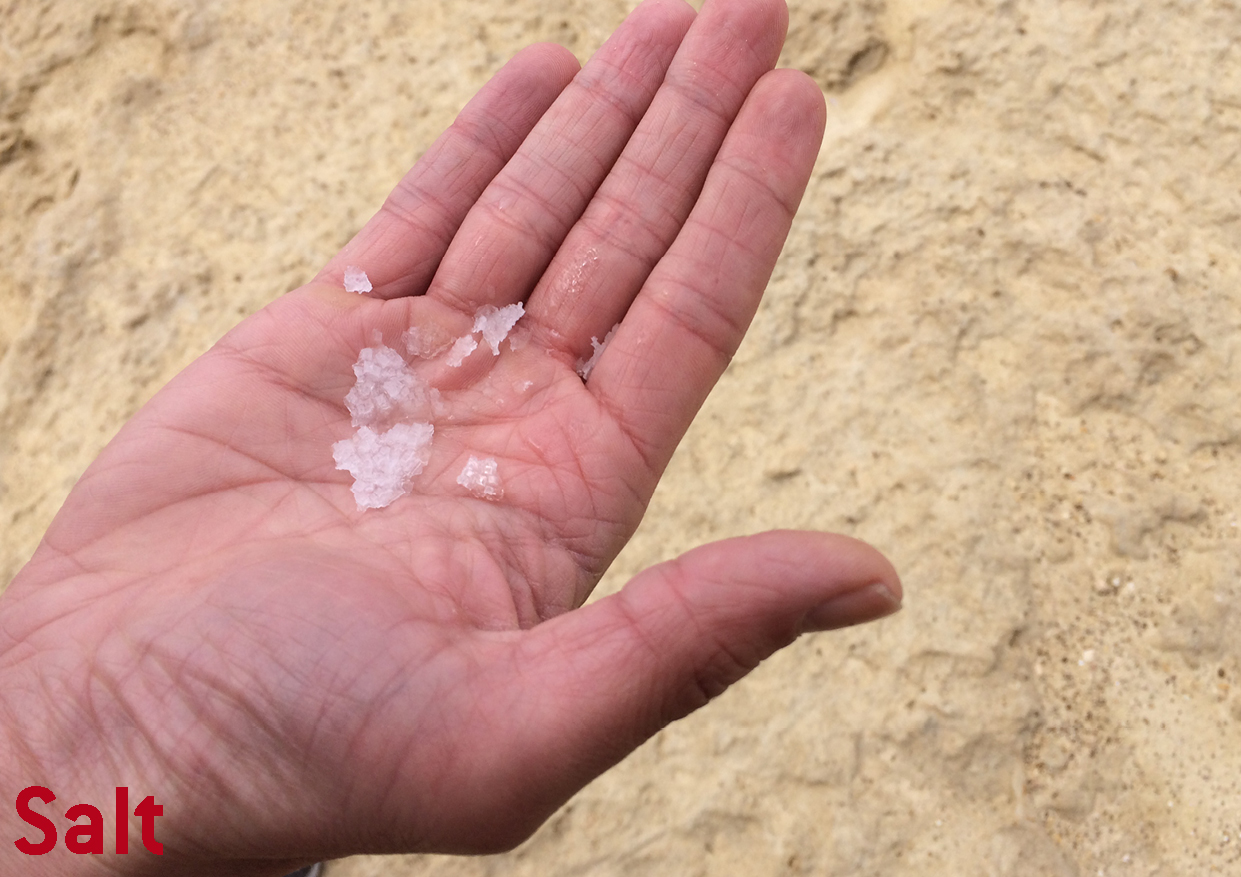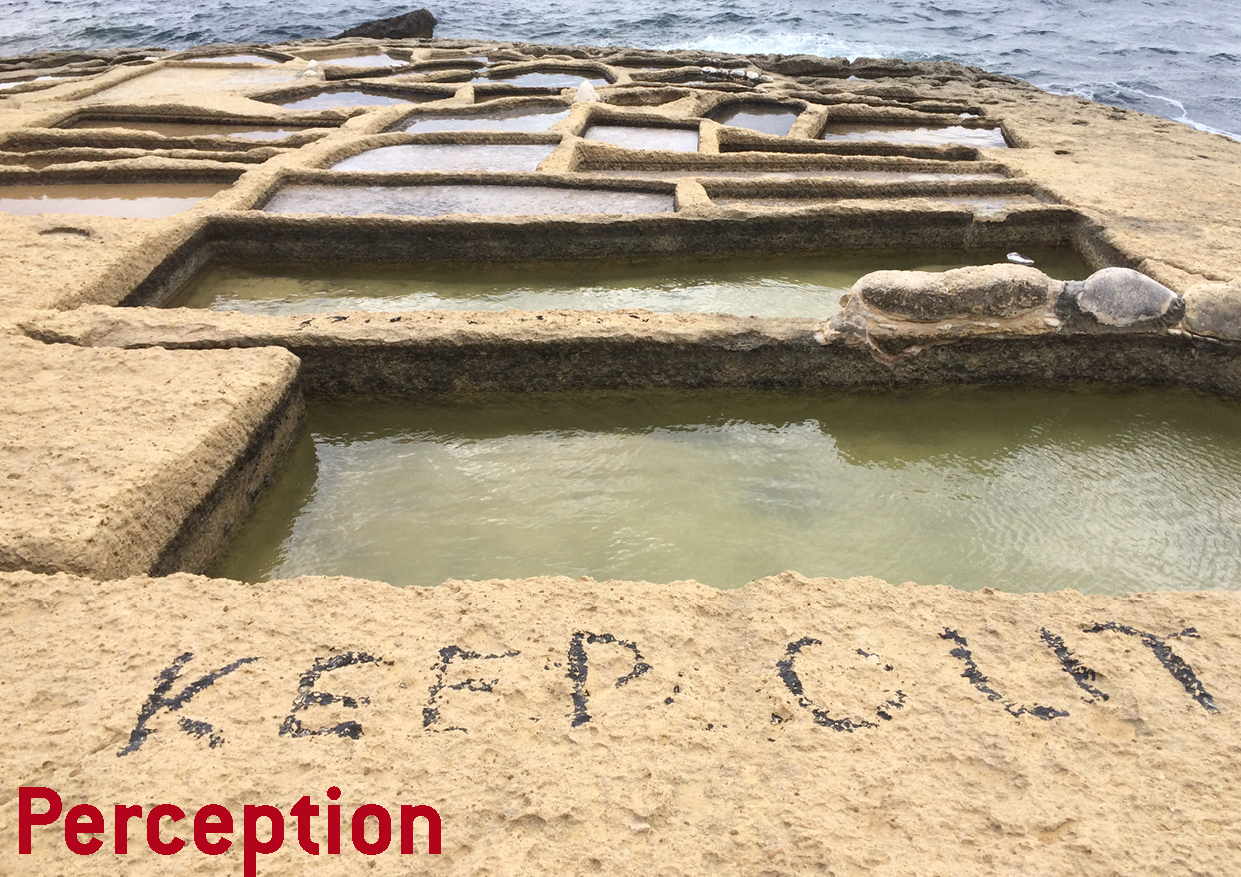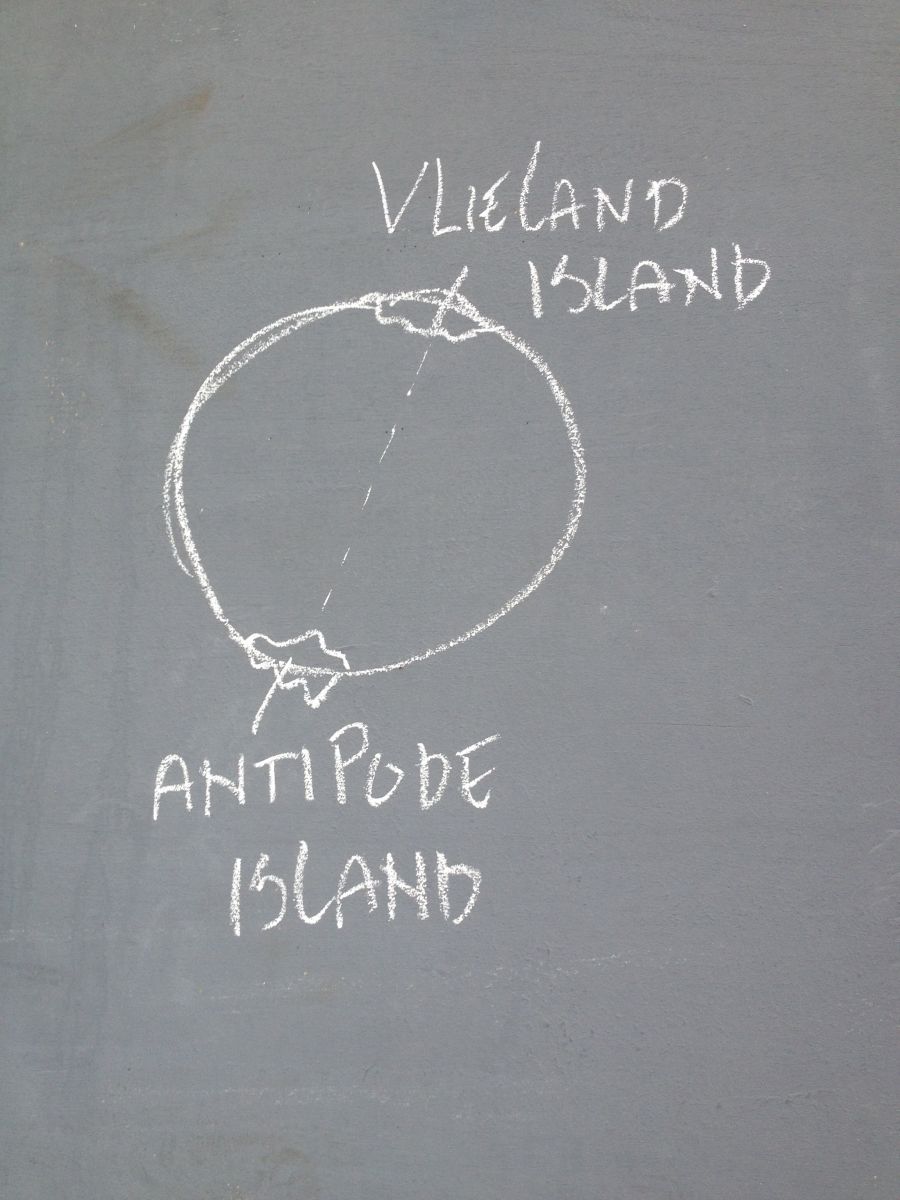Zandmotor, a cultural phenomenon 2014-now
| 0000-00-00 00:00:00
ARTISTIC RESEARCH ZANDMOTOR & MORE
2014 - now
Since 2014 Satellietgroep explores the Zandmotor as cultural phenomenon.
The Zandmotor is a pilot near The Hague that uses the principles of 'Building with Nature'. This innovative project aims to generate new knowledge in times of climate change and relative sea level rise for our future coastal protection. An innovation, built on the foreshore in 2011 with 21,5 million cubic meters of sand. The Zandmotor is the only Dutch area outside the dikes that is exposed to the tides, built to transform and even assimilate around 2030 in sea, beach and dunes. The result is a dynamic extension of the coast, a new controlled ‘wilderness’. The Zandmotor is an publicly accessible open air scientific and artistic laboratory.
Satellietgroep initiates research on the Zandmotor as an innovation that generates innovatory visual narratives about the hybrid relationship of mankind and man made nature. It requires the arts and design to further explore the implications of this evolving relationship to be shared with broader audiences. Satellietgroep hosts artists in residents for artistic fieldwork, connect with locals and experts and develop new concepts and works that reflect the resilience of coexistence of man and water, in past, present and future.
Satellietgroep redefined the Zandmotor as the largest contemporary cultural statement of the Anthropocene era we now live in. It is a time machine that transports us from the geological timeframe of the Holocene (affected by nature) into the Anthropocene (affected by mankind). This newest innovation is built with sand from the bottom of North Sea which also brought ashore mammoth fossils. The Zandmotor is described as Building with Nature, a conceptual shift in our relationship with the sea. This relationship is as much a cultural phenomenon as it is an ecological or engineering one: designed by man, performed by nature. The Dutch are masters in disguising a cultural landscape as a natural one. We tend to design, contruct, reconstruct and deconstruct nature to fit it to our needs.
Together with artist, designers, students & scientists Satellietgroep develops a growing Zandmotor Collection. During Public Expeditions on the Zandmotor we engage people in these visual narratives. We need engaged artists and passionate scientists to jointly test our perceptions to raise public and professional awareness.
In short, the Zandmotor is a time machine about the origin of the North Sea and the Netherlands, of geology and mammoth fossils, about people and living on the shores, of archeology and artefacts in the dunes of Solleveld. Living in the Netherlands means living in an artificial man-made environment mostly below sea level. The Dutch cherish the myth of a free open sea and dunescape. Like living in a theme park, pleasing to the eye without worries and full of leisure and endless entertainment.
(A selection of) Topics:
Storytelling with visual narratives
The curatorial team of Satellietgroep explores artistic research into the hybrid relationship of mankind and man made nature. Co-founder, conceptual artist and curator Jacqueline Heerema invented Innovatory Heritage© as an innovative method of public appropriation, invented traditions, staged authenticity and storytelling through arts, design and science for broader audiences.
Collection - The Anthropogenic Coastal Atlas
Satellietgroep collects and shares the international artistic insights and artworks during public events and professional conferences.
Climate change – Climate as Artefact
With the prospect of climate change, relative sea level rising, dis-balance of salt and fresh water, shifting ecologies and geopolitical strategies, migrations of people and species, pressures of urbanism, tourism and energy supplies we face major coastal transitions. Understanding the human impact on climate change involves disclosing new visual narratives, as the vital links for unlocking knowledge and insights on the perception of history (where we come from) and the challenges we face (where we are going).
Time - Migration
We live in a globalised world. Shaped through time by exchange. Exchange of sediments and debris, of species - like people, plants and animals - of cultures and knowledge. Processes that are affected by mankind.
ZANDMOTOR PROGRAM & ARTIST IN RESIDENTS:
with special thanks to all artists, experts, locals, partners, funds & commissioners for their confidence to come out of their comfort zones and generous support!
2014
Public Expedition Zandmotor#1: Sand Drift
Artist in residence Zoro Feigl - Untangling the Tides (installation).
2015
Public Expedition Zandmotor#2: Cultural Geology
Artist in residence Theun Karelse - Next Doggerland (publication), Fossils Soup (tasting).
Artist in residence Josje Hattink - Mistaking Clouds for Mountains (installation).
Public Expedition Zandmotor#3: Staged Landscape
Artist in residence Sarah Cameron Sunde (USA) - 36.5 / a durational performance with the sea (performance, performed at Katwijk aan Zee; multi screen installation presented at Sail Amsterdam) with TAAK and Jonas de Witte.
Public Expedition Zandmotor#4: Liminal Transitions
Artist in residence Berndnaut Smilde - Breaking Light (intervention).
Followed by Breaking Light#2 at Lighthouse Scheveningen during TodaysArt 2015.
Public Expedition Zandmotor#5: CineMare
Artist in residents Laboratory for Microclimates – Zandzicht (performance, video).
Onkruidenier - A Taste of the Sea (tasting).
Public Expedition Zandmotor#6 : Climate Experiment
Artist in residence Esther Kokmeijer: how climate adaptive are we, humans?
2016
Public Expedition Zandmotor#7: Sand Songs & Climate Proof
With iii, students ElementsLab ArtScience, Playing the Elements
Artist in residence Esther Kokmeijer: Climate Proof (videowork, CineMare#2).
Satellietgroep & Onkruidenier: A Taste of the Anthropocene.
Exhibition: The Sea and Zandmotor Source of innovation
Festival Designkwartier, Tempel The Hague. By Satellietgroep with Onkruidenier, artist Theun Karelse, designers Atelier NL, Aliki van der Kruijs, Nienke Hoogvliet.
Public Expedition#8: Landschapsextracten
Satellietgroep & Onkruidenier, Waterlandse Vloed 1916-2016, Over het IJ Festival Amsterdam.
Public Expedition Zandmotor#9: A Taste of the Zandmotor!
Satellietgroep & Onkruidenier, 5 years Zandmotor Conference (Talk, Waterpionier Zandmotor Cocktailbar), Zandmotor ZandGlas by Atelier NL and Beachrock by TU Delft.
Public Expedition Solleveld & Zandmotor#10: Waterpionier
Satellietgroep & Onkruidenier with Dunea Duin & Water, AWN - Vereniging voor Amateurarcheologen Nederland, de Tempel - afdeling Archeologie, Natuur en Milieu Educatie Den Haag, NatureCoast.
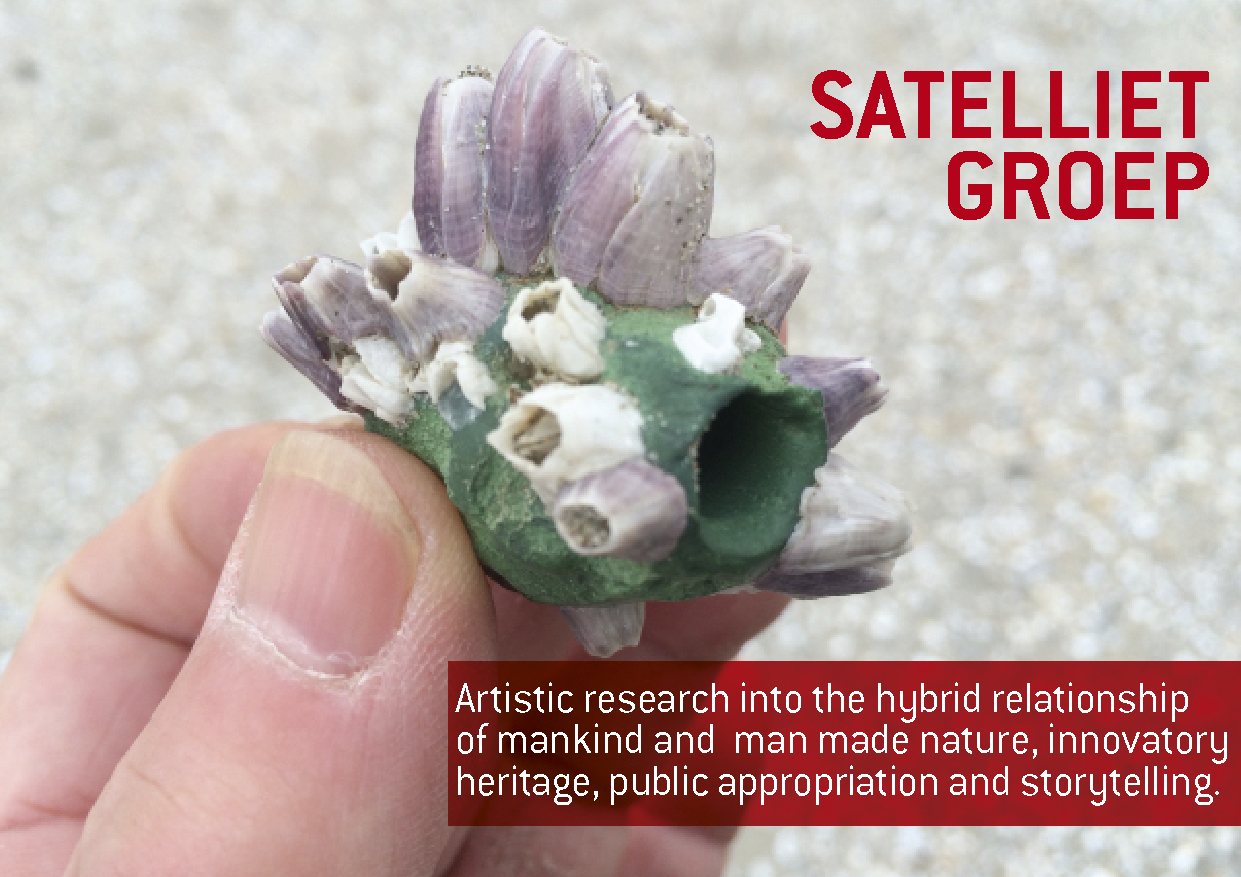
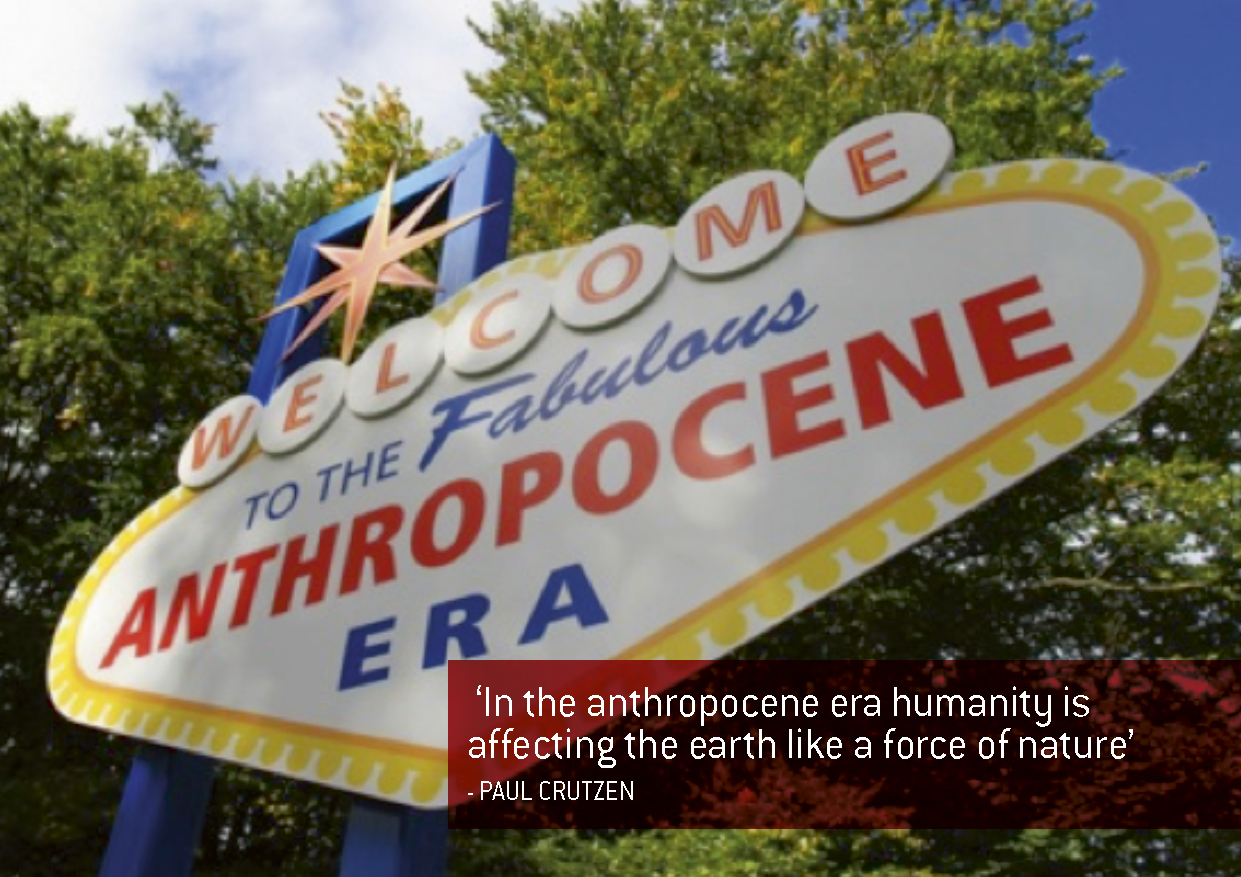
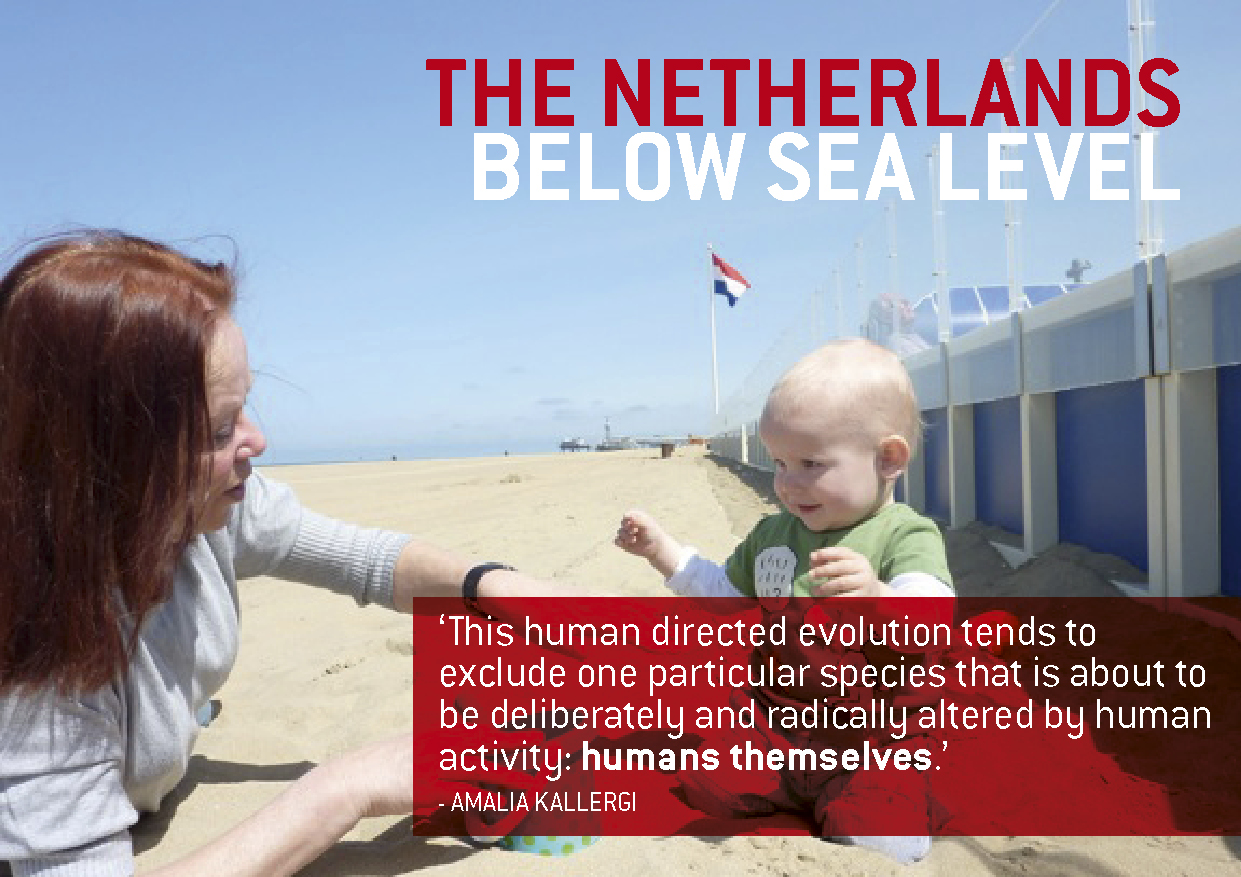
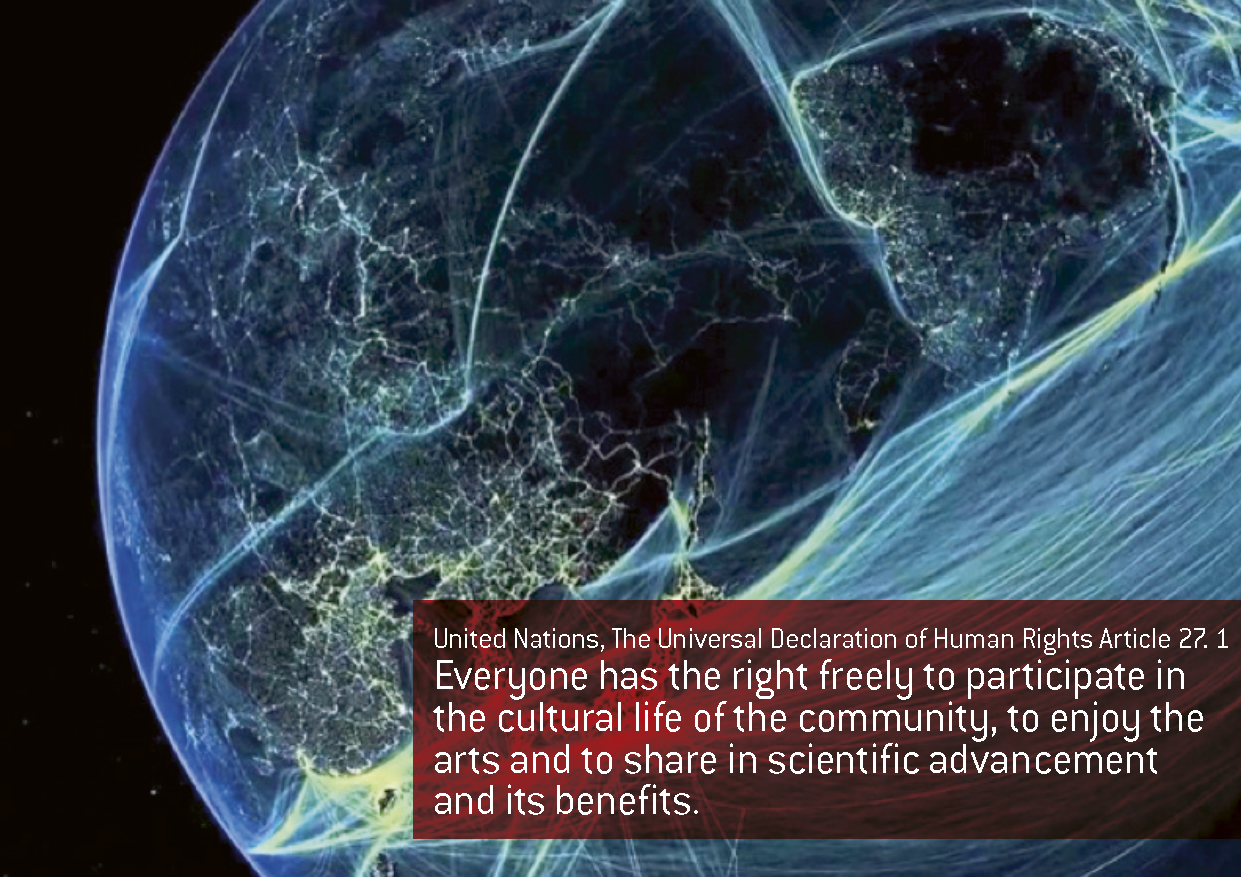
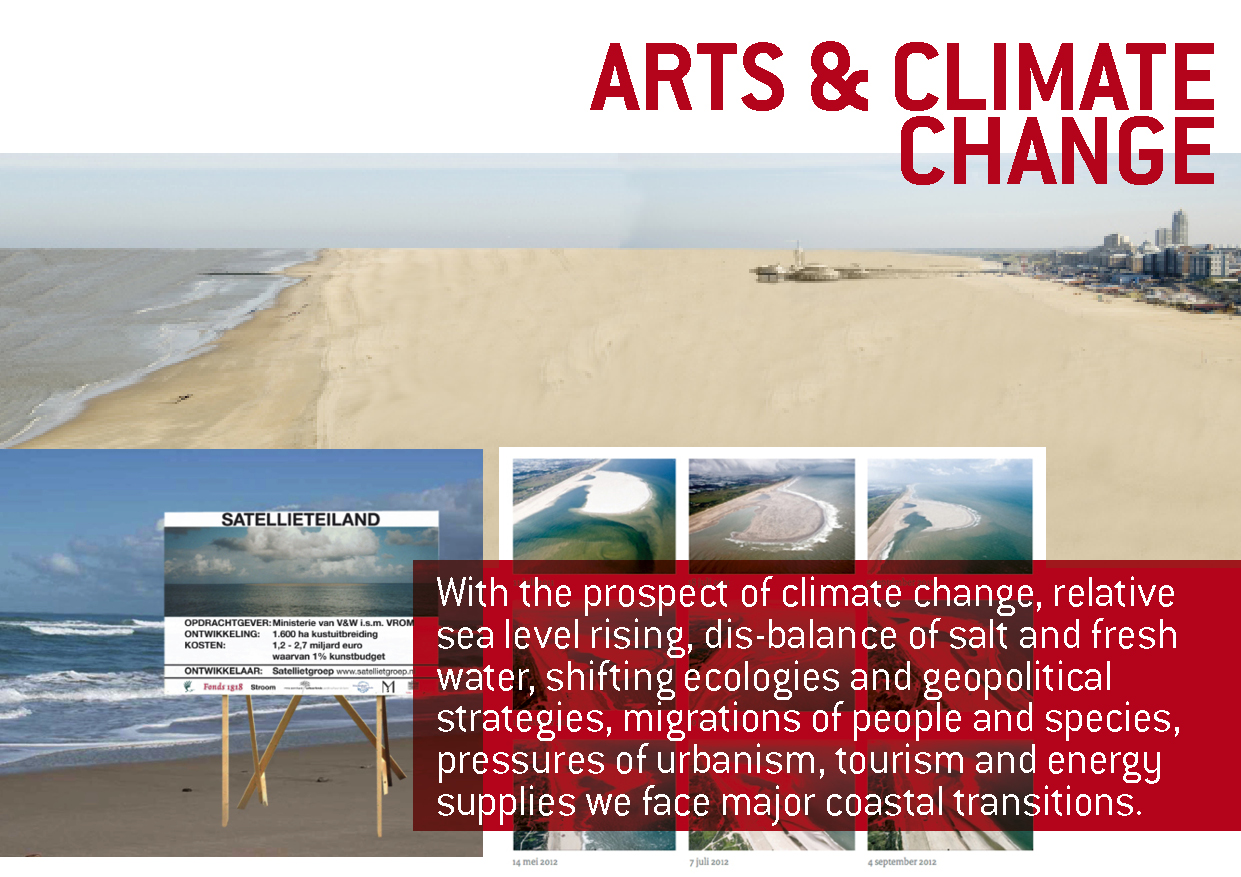
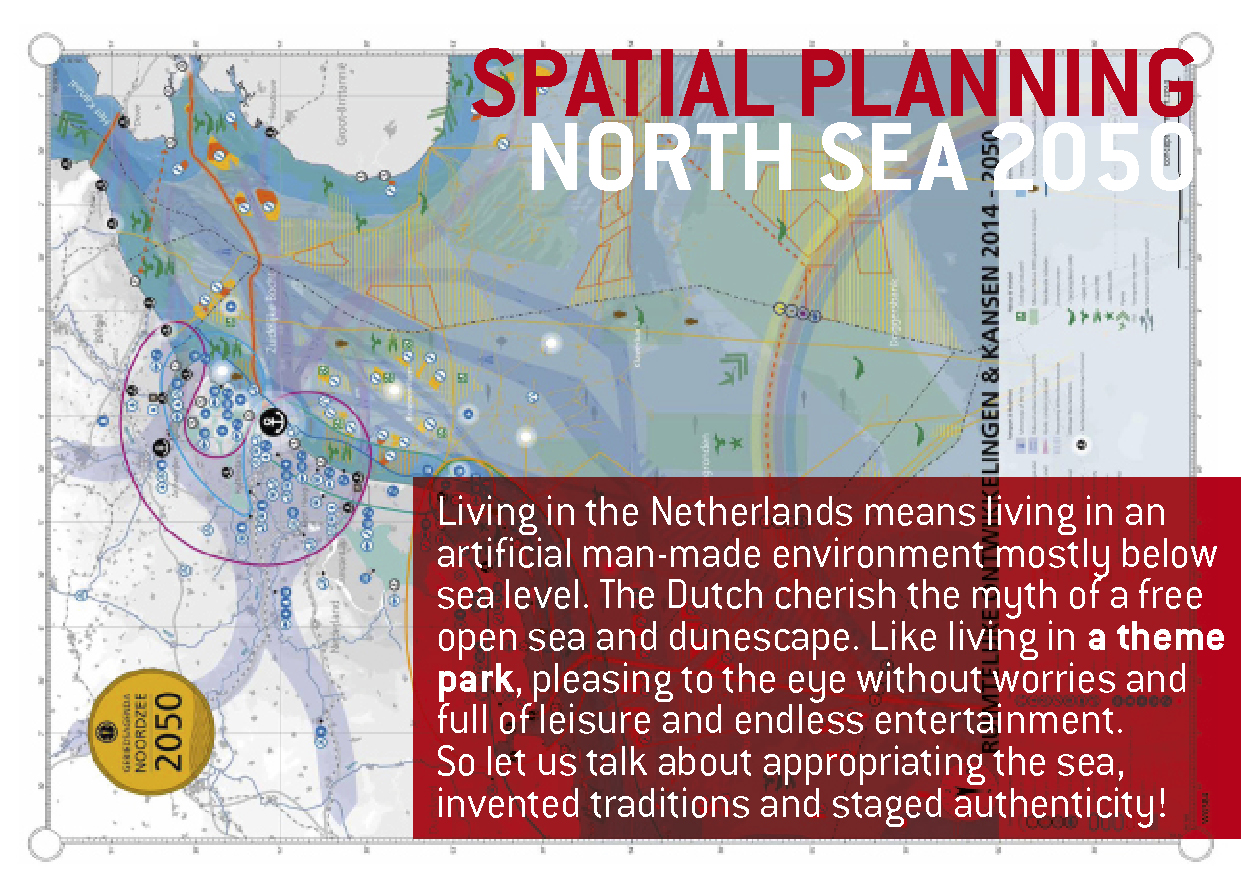
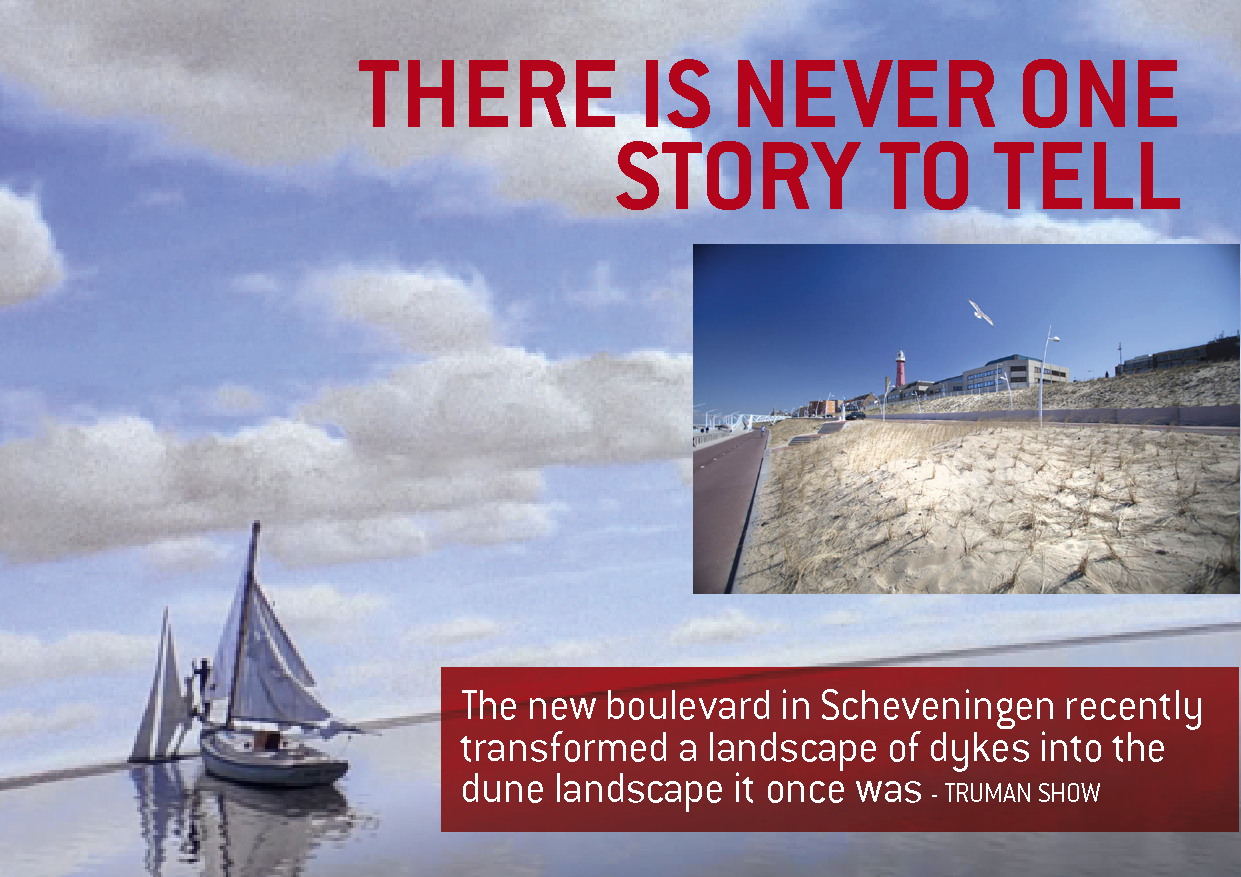
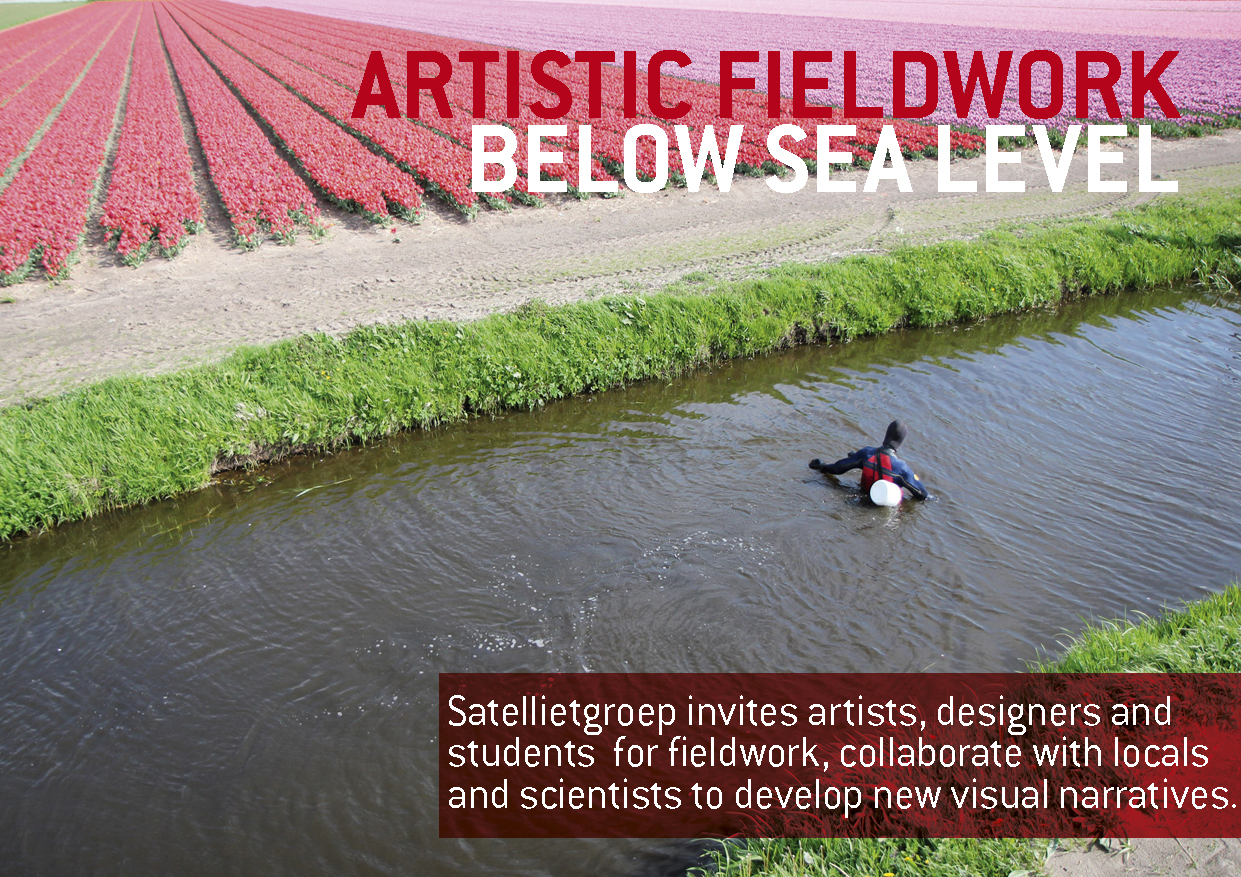
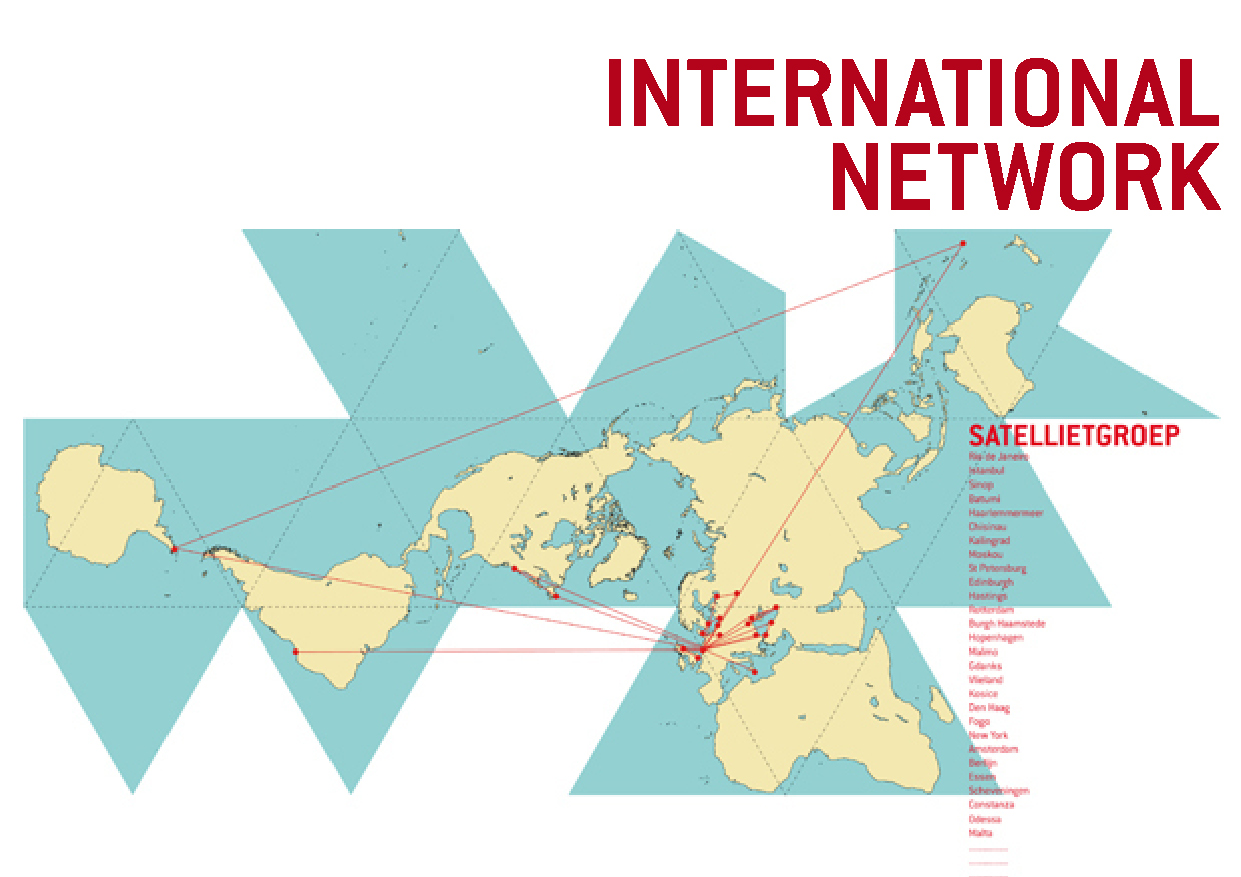
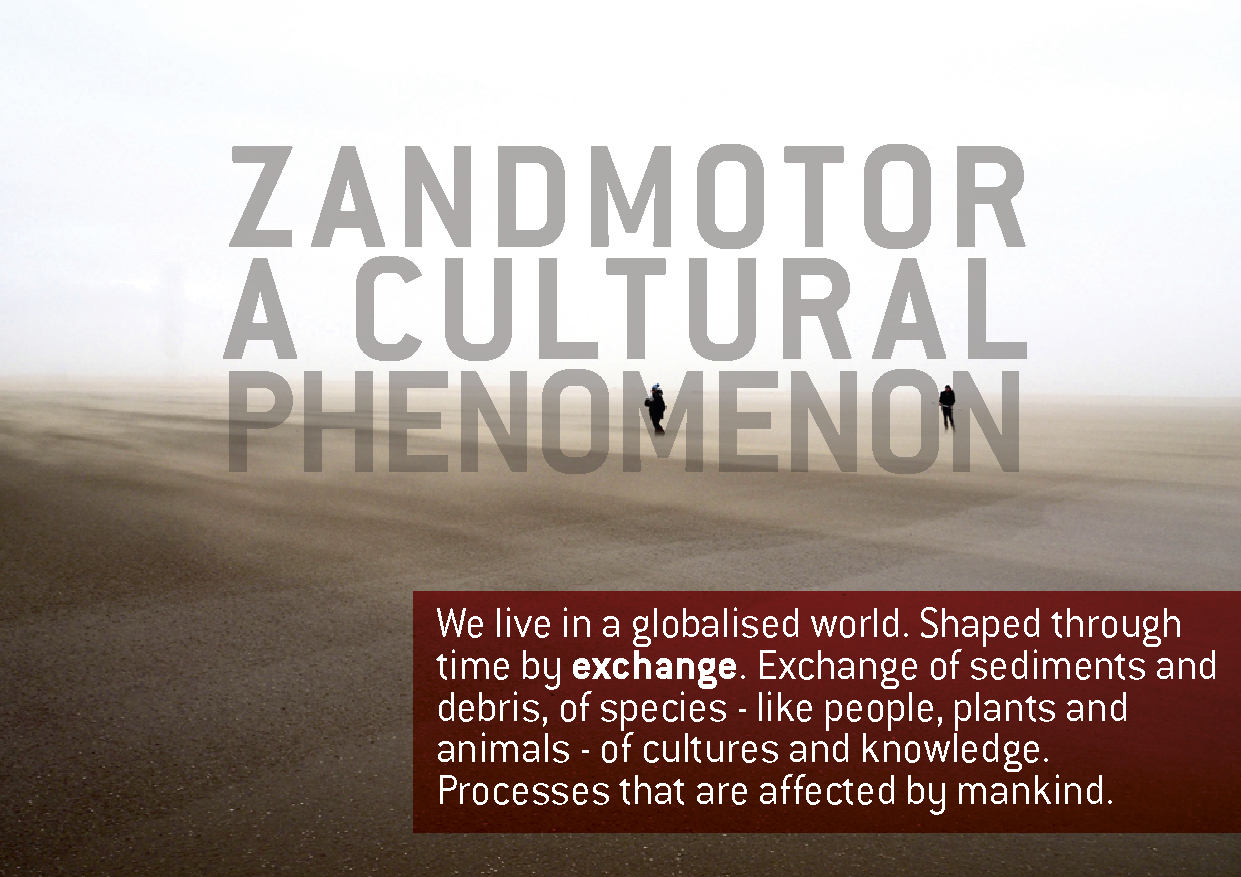
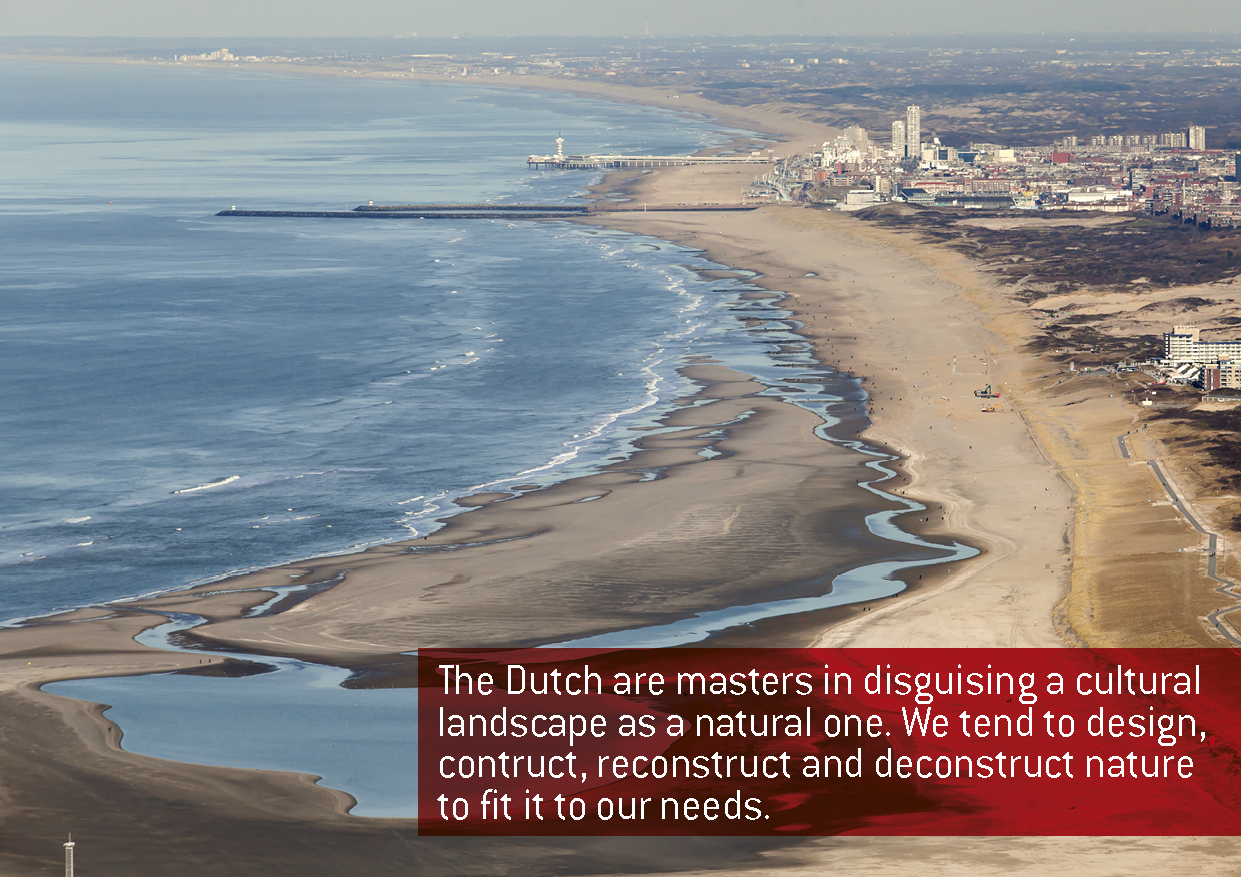
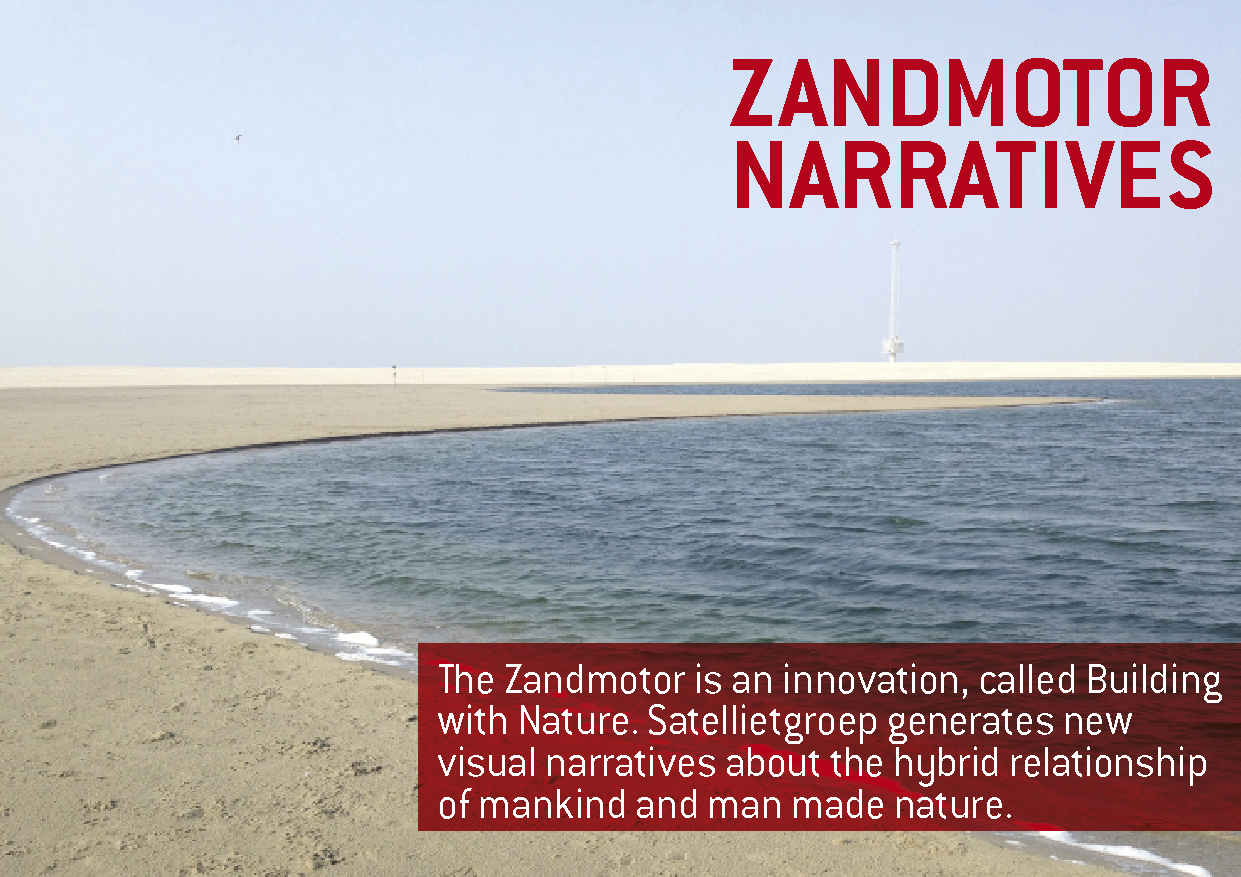
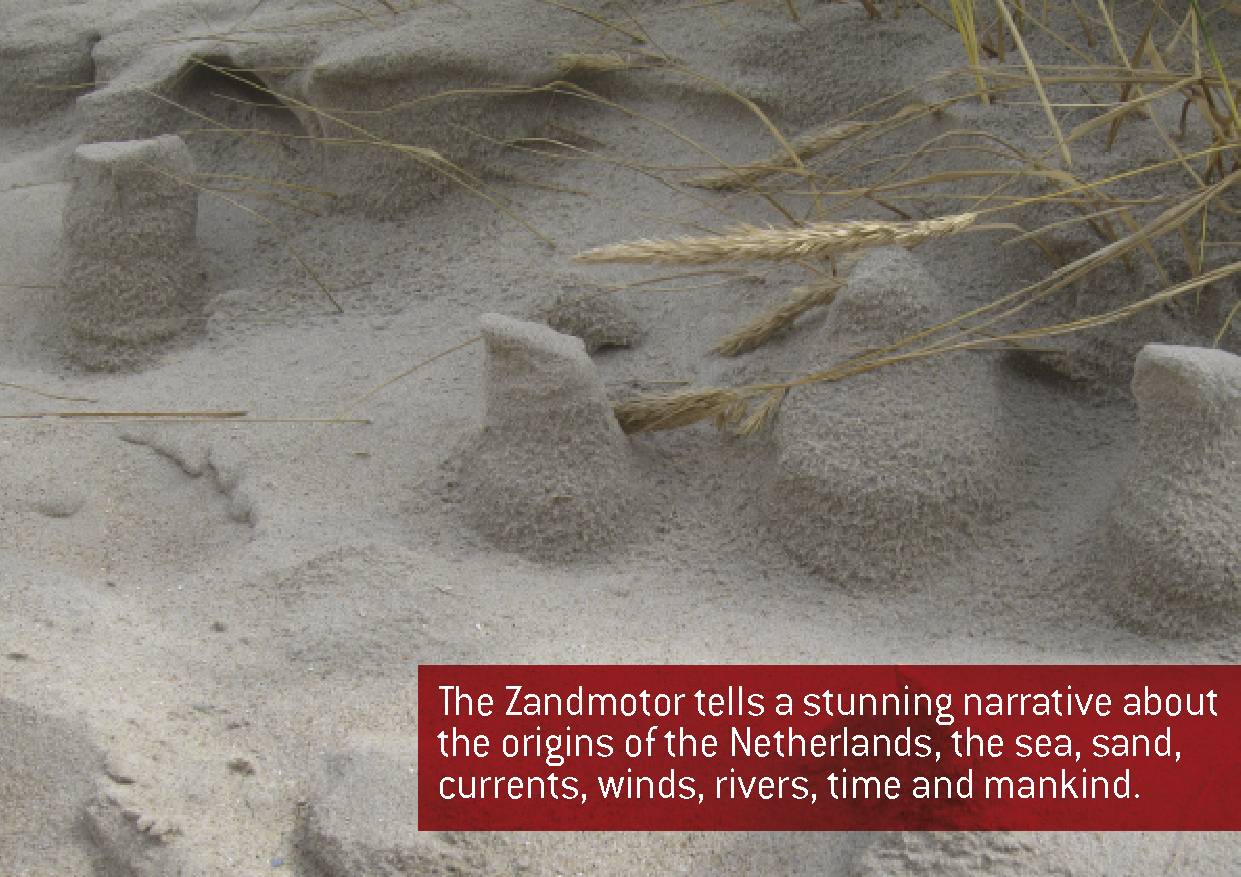
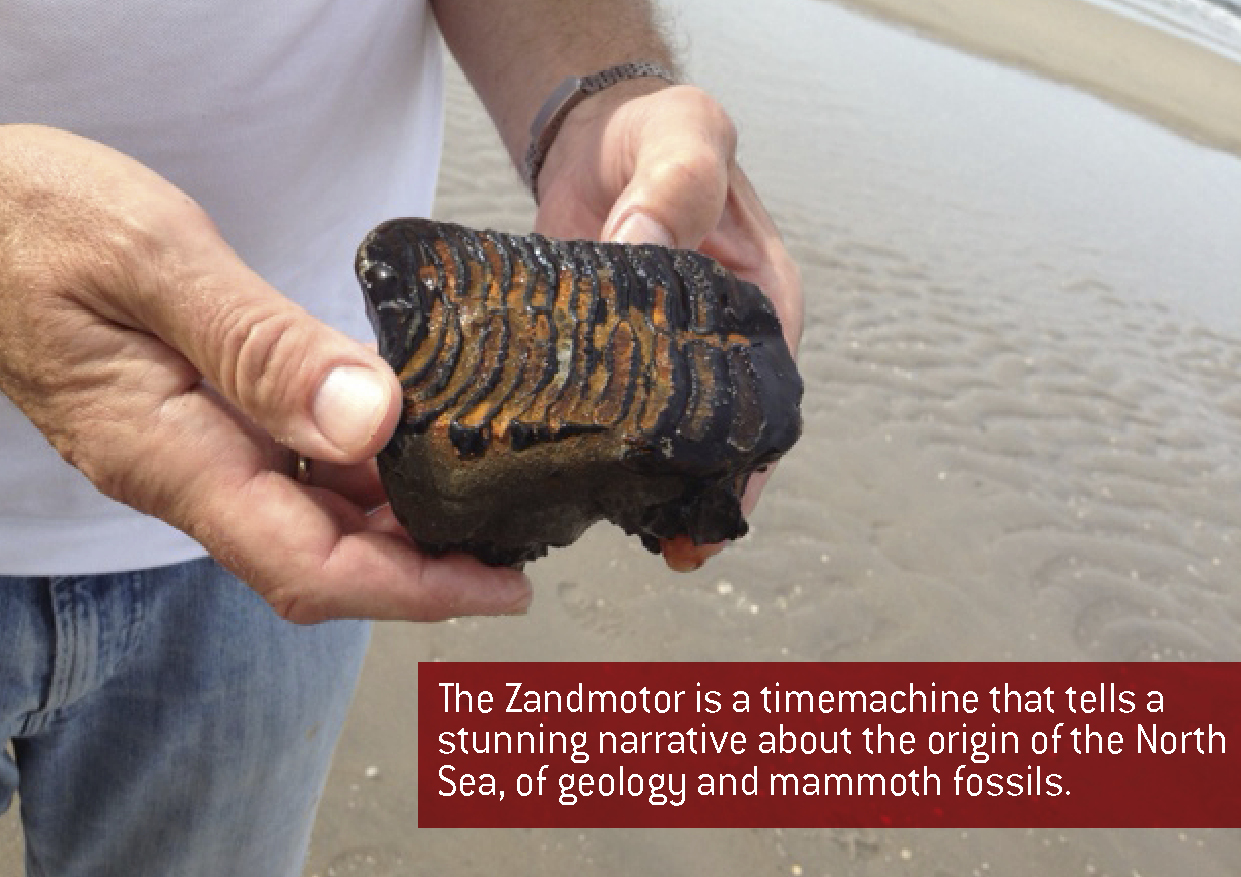
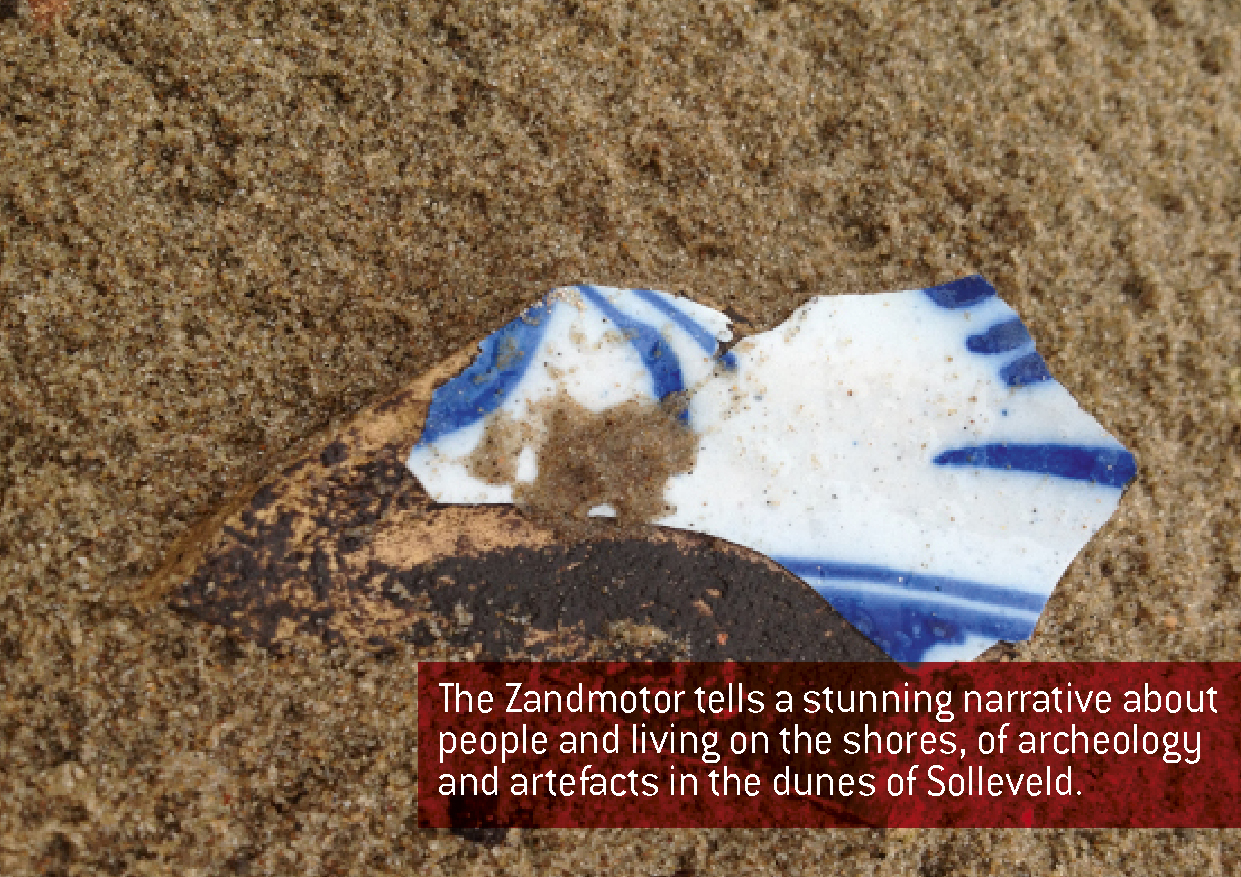
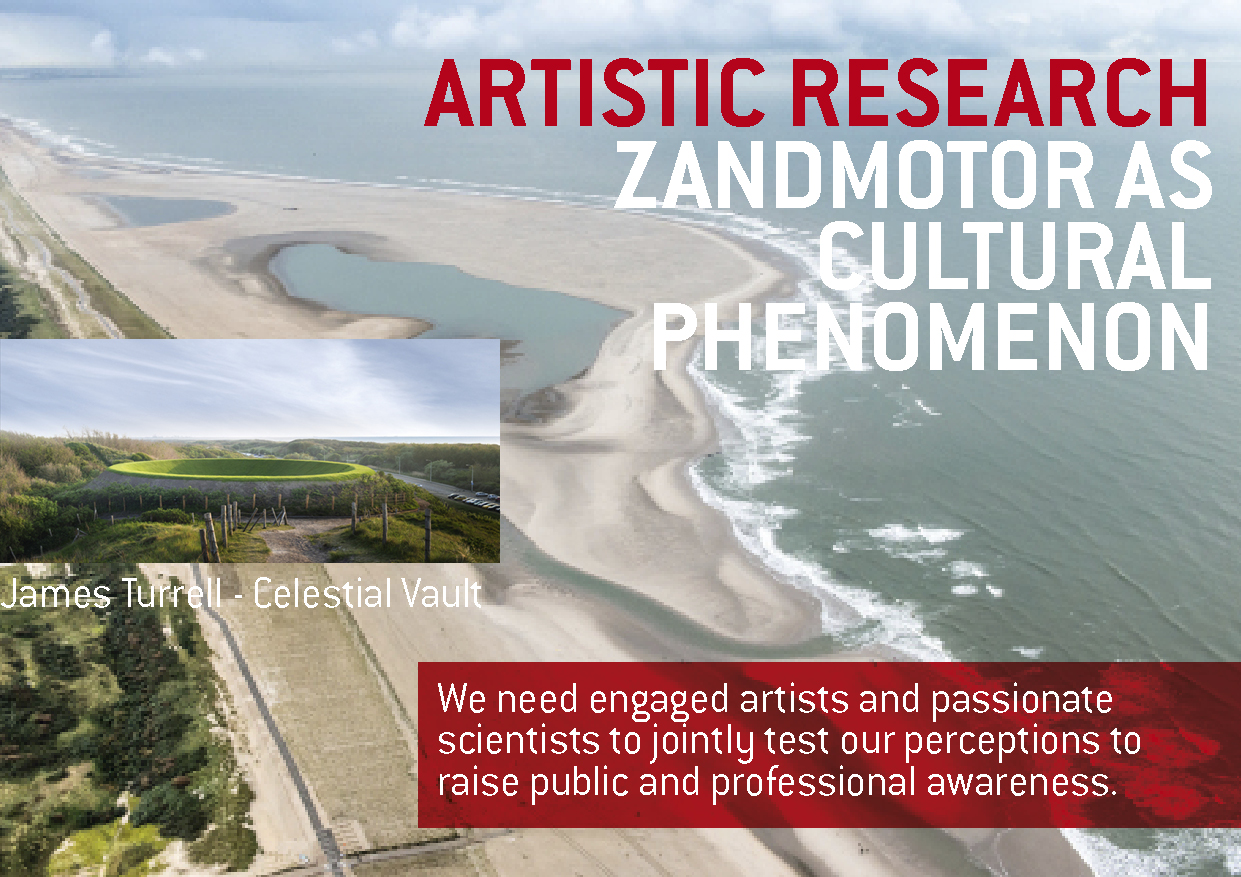
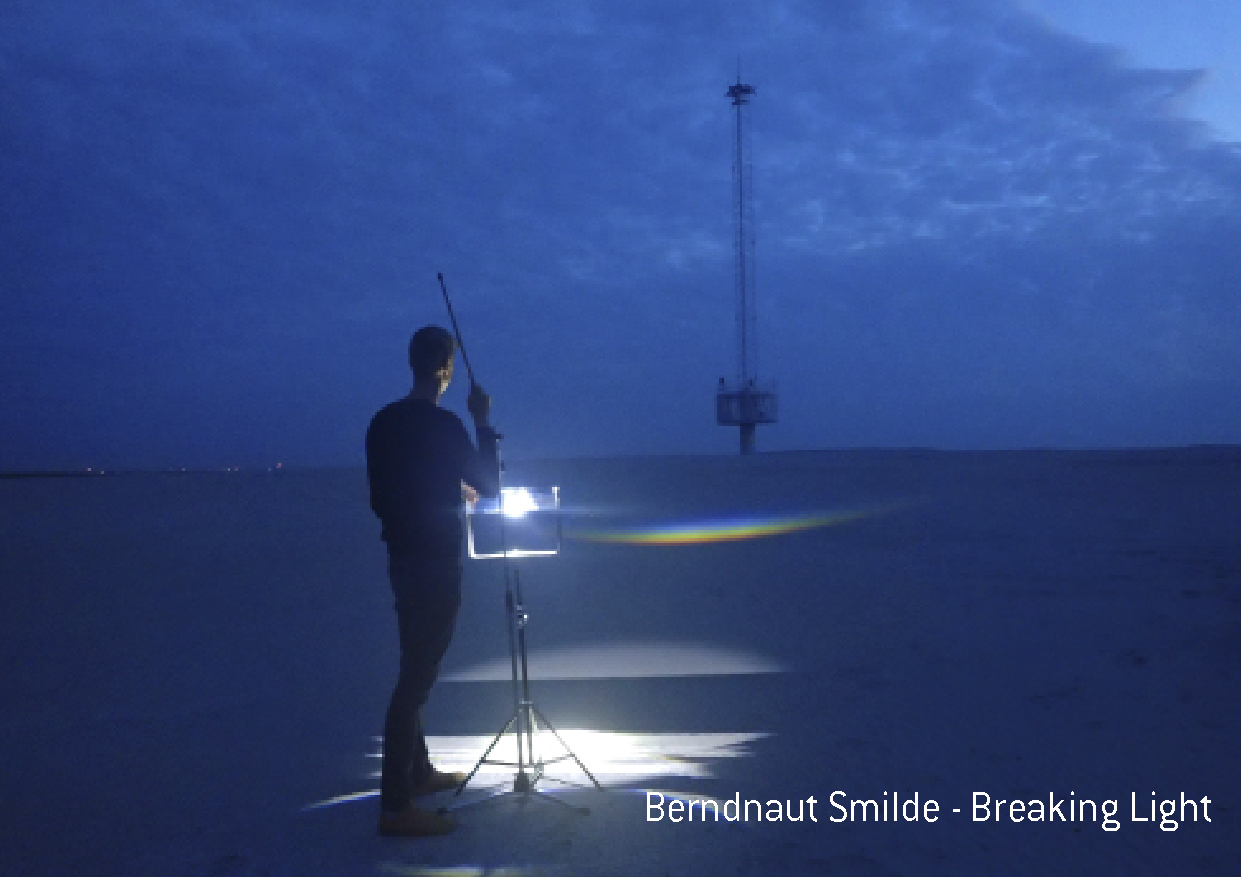
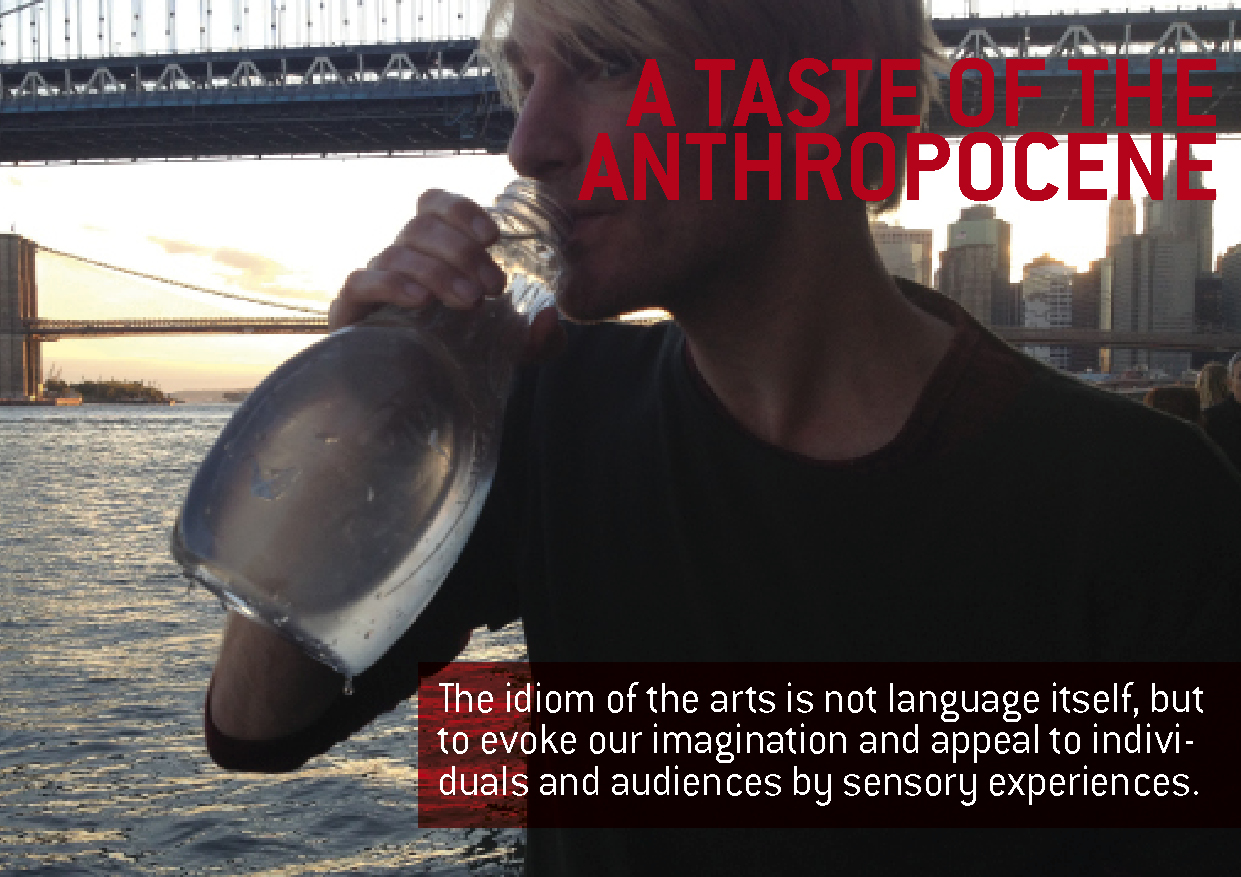
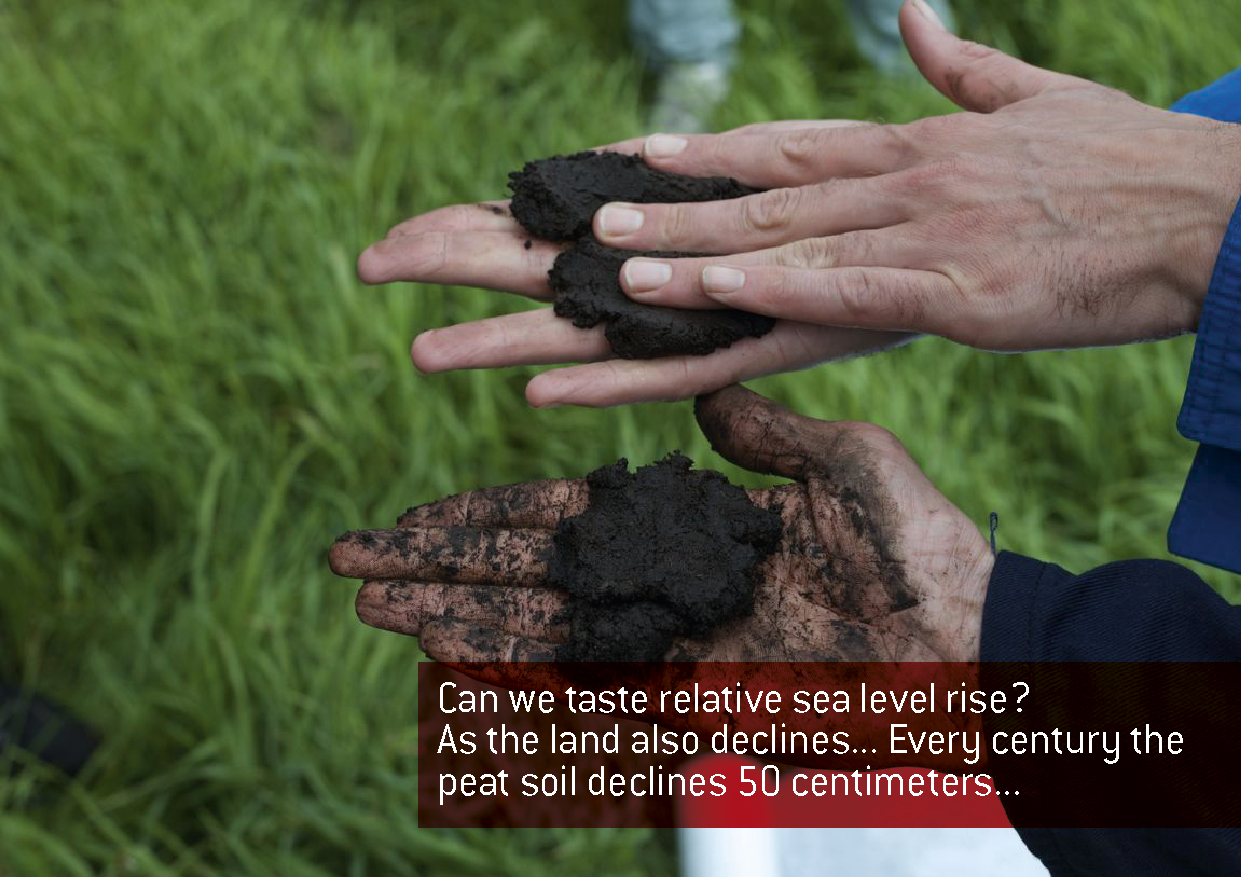
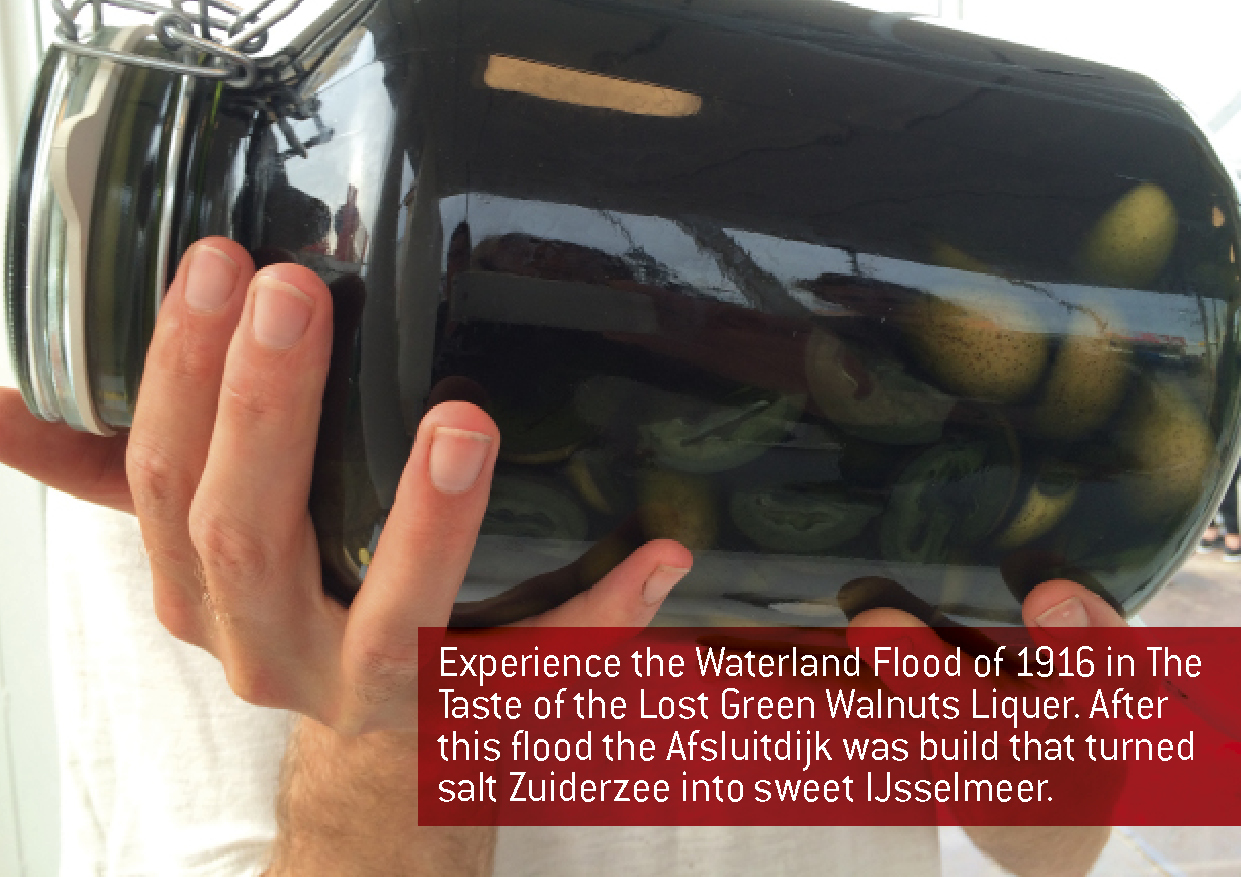
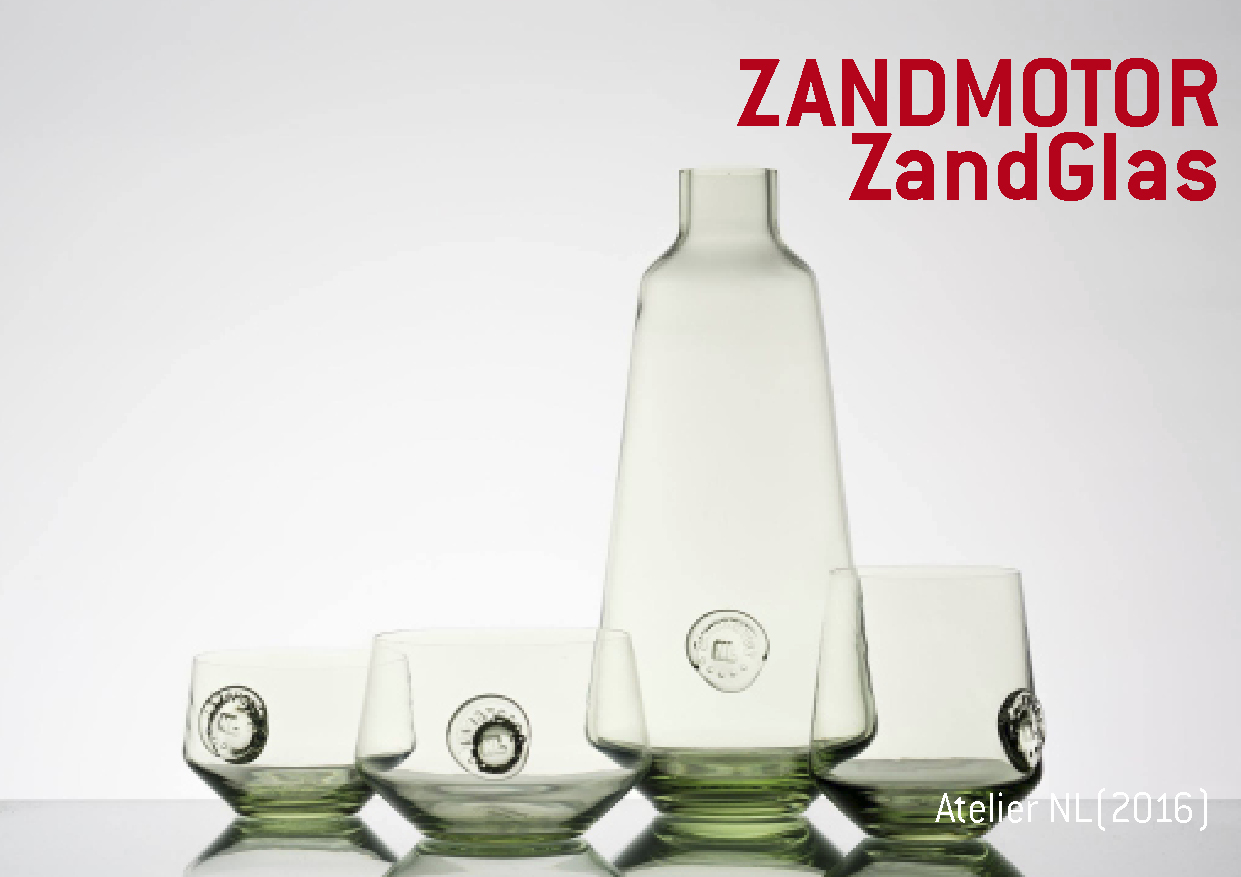
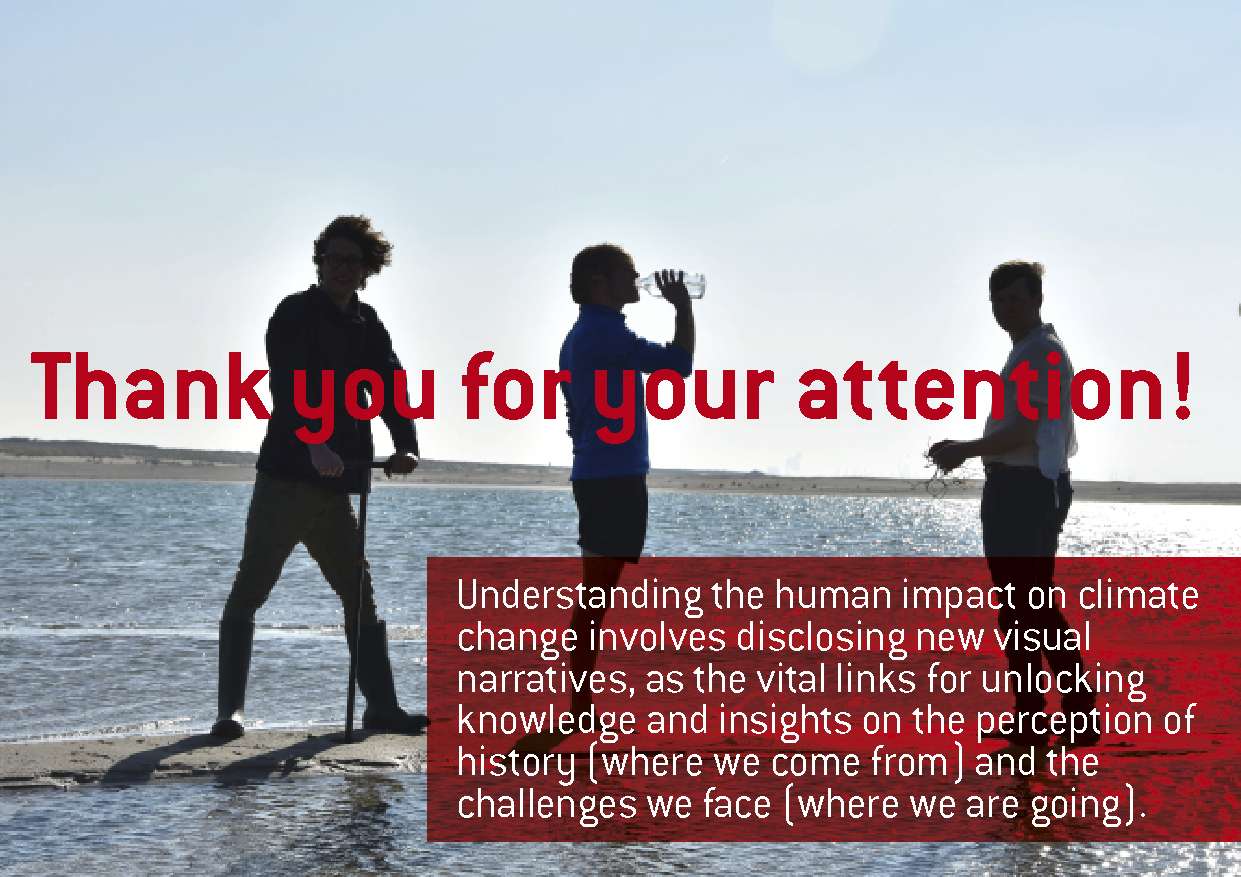
To whom belongs the sea? 2015
| 0000-00-00 00:00:00
TO WHOM BELONGS THE SEA?
TALK AT FAILED ARCHITECTURE
Date: September 24, 2015
Time: 16:30 - 18:30
Location: TodaysArt Festival at Zuiderstrandtheater, The Hague
Satellietgroep hosted Failed Architecture at Badgast. Curator Jacqueline Heerema joined Failed Architecture at TodaysArt Summit - Bright Collisions Program. During this edition of TodaysArt, Failed Architecture explores the defamed architecture and tourist infrastructure of Scheveningen and other Western European seaside towns, taking into account international and historical perspectives. Their aim is to open up new perspectives on the alleged failure of post-war seaside architecture - from what it's perceived to be, what's actually happening and how it's represented to the public.
More information: www.failedarchitecture.com/fa-at-todays-art-scheveningens-seaside-architecture/
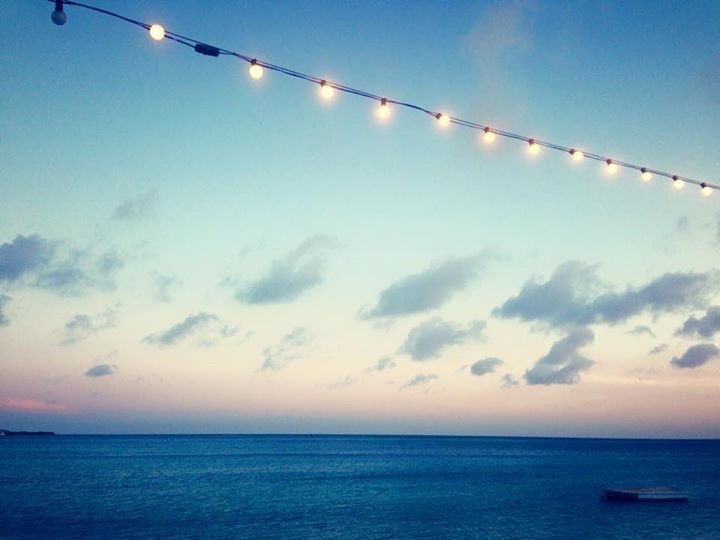
Appropriating the sea?
To Whom Belongs The Sea? by Jacqueline Heerema
Soon the problems of beach resorts will be solved by climate change. With the prospect of a more wet and stormy climate tourism at the Dutch shores will become unattractive.
Time for change!
Artistic fieldwork
How incomprehensible is it to live in a country below sealeavel?
Understanding the Netherlands is basically understanding our relationship with water and the sea. Satellietgroep is based in The Hague since 2006 and explores through arts the social and ecological impact of the sea and coastal transitions on cities, people, communities and environments in The Netherlands and abroad. Satellietgroep invites artists, philosophers, designers, architect and urbanists to explore the sea and coastal transitions.
Oceans, seas and coastal regions are under tremendous pressure, worldwide.
What trigered the artists initiative Satellietgroep was the lack of involvement of arts and culture in the master plans for coastal transitions in The Netherlands, specially in The Hague, with top down masterplans for Scheveningen, Kijkduin, and the prospect of islands in front of the coast.
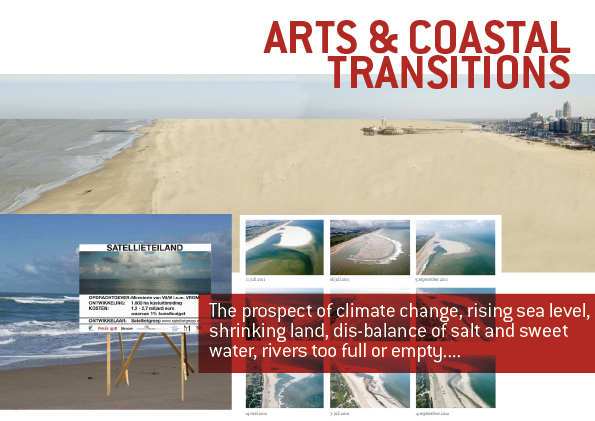
Spatial Planning North Sea 2050
With the prospect of climate change, rising sea level, shrinking land, dis-balance of salt and sweet water, rivers too full or empty, we face major coastal transitions. Transitions in spatial and economical sense that may lead to conflicts, estrangements, loss of heritage and loss of more informal cultural uses of public coastal space.
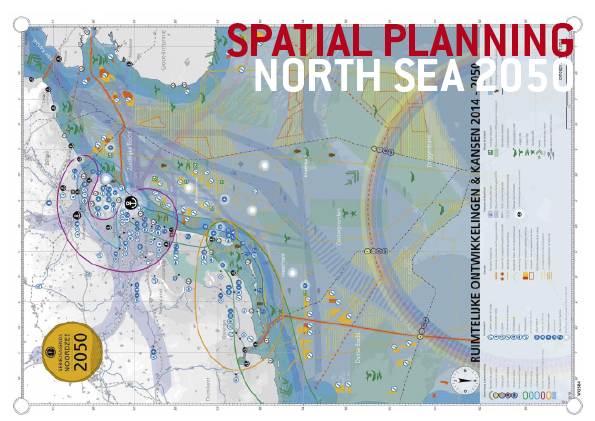
There is never one story to tell
We all live in the bubble of a Truman Show.
One day you wake up and realize what kind of world you live in.
Recently the dikes at Scheveningen turned into the dunes landscape it once was. So, lets talk about myths, appropriating the sea, manipulations, invented traditions and staged authenticity!
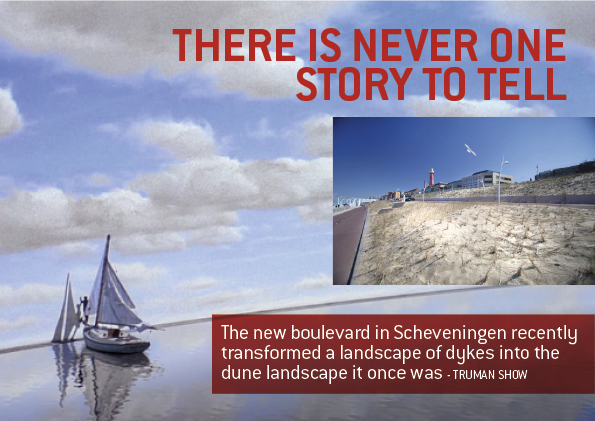
Theme park The Netherlands
Living in the Netherlands means living mostly in an artificial man-made environment. The Dutch are masters in disguising the cultural landscape as a natural one.
We tend to design, construct, reconstruct and deconstruct the coastal landscape to fit it to our needs. Like living in a theme park, pleasing to the eye without worries and full of leisure and endless entertainment.
In this picture the grandmother celebrates the first time she is playing with her grandson on the beach at Scheveningen. This picture tells a story about the Netherlands: the sand they play with is put there for coastal protection, the boulevard is a dike in boulevard for coastal protection, in the background the pier is a derelict remnant of former touristic venues competing with touristic destinations elsewhere and in the middle the Dutch flag completes the picture.
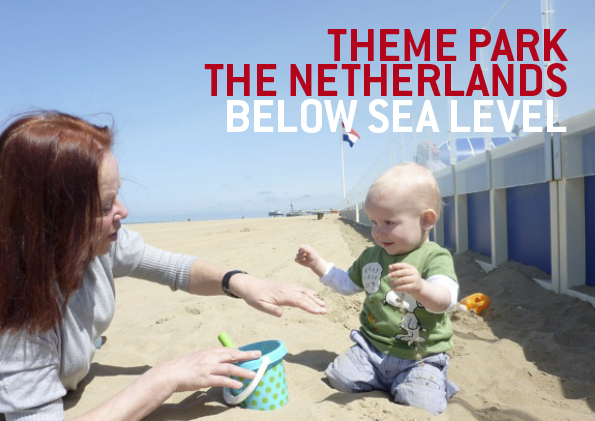
So, what happens elsewhere?
Belgium: parallel to the coastline
Every Belgian is said to be born with a brick in his stomach. Building your own house has shaped also the Belgian coastline. Developed as a sequenze of rectangular blocks of private housing along promenades it transformed with mass tourism into high rise apartment building catering for the Belgium dream to spend retirement at the seaside.
The good thing is, that a lot of people live at the coast and enjoy a private seaview, can travel along the coast by parallel tramway and eat (Dutch) mussles. The offsite is, that the Belgian coast is often called Atlantik Wall and dunes became scarce.
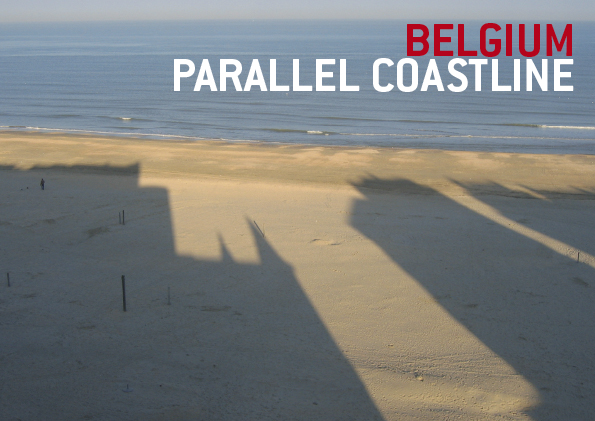
La Grande Motte: the paradox of mass tourism in a Tabula Rasa
After WOII the French goverment invented 'Droit a la Mer' - the social ideal based on the idea that a holiday on the seaside had to be democratized. More wealth, leisure and mobility for all made spending leisure time at the seaside accessible for everybody.
In a swamp area in the south of France a new and complete beach resort was designed by Jean Balladur with special architecture for mass tourism, influence by Oscar Niemeyer.
It was at first regarded as an ideal research area for new residential ideals, manufactured nature and innovative solutions for coastal expansion. At the same time the paradox of mass tourism arose: in search of paradise you find a composed touristic scenery.
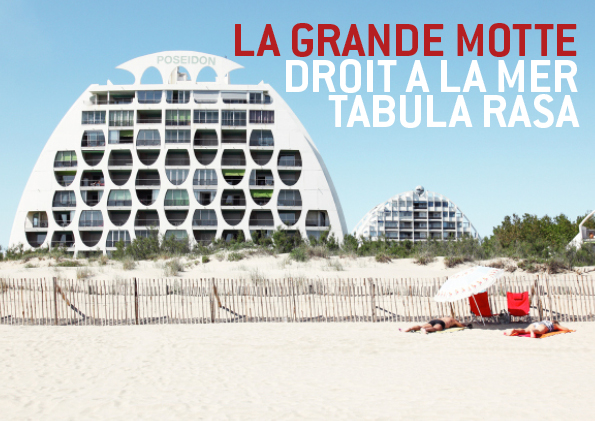
Orange County in Kemer, Turkey - copy paste architecture
Is search of the perfect touristic destination for the Dutch, including good weather and at the same time offering the familiar comfortable Amsterdam scenery, the all inclusive Turkish beach resort Orange County at Kemer was developed.
The advertisement reads: 'When you arrive at the hotel you will find yourself at the central station of Amsterdam, including Dutch information boards. Also striking are the Amsterdam canal houses complete with slanted walls. Also the well known windmill is not lacking. In short; a unique hotel with a Dutch twist under the Turkish sun.'
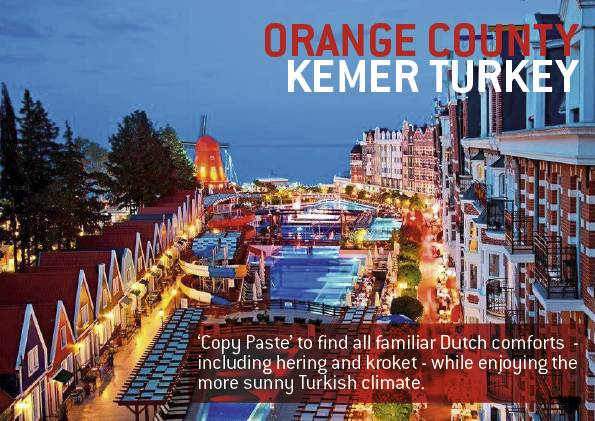
Lindoduin
In Scheveningen however, the high rise appartment building Lindoduin was built with a city view. Resilient people turned their bedrooms into the living room facing the sea.
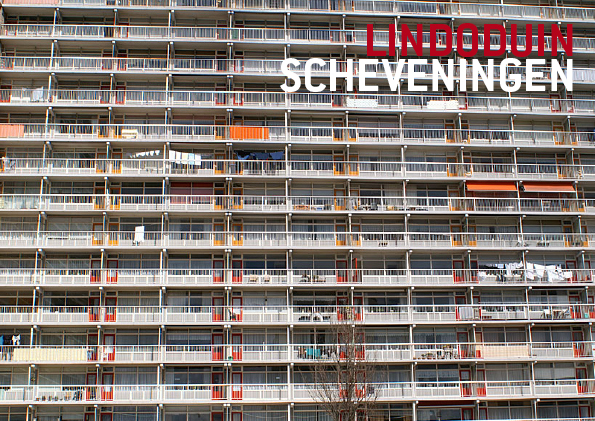
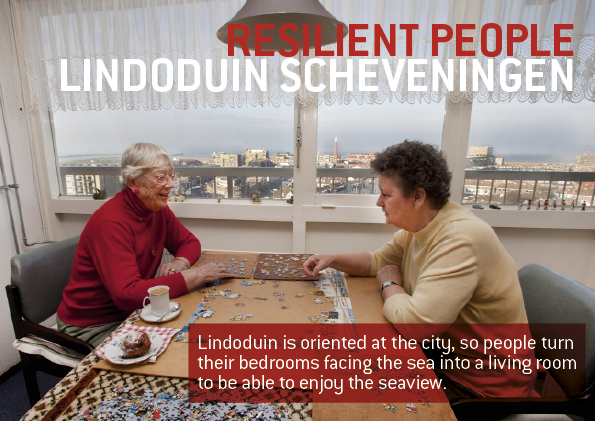
So, who decides what?
Zandmotor - Building with Nature
Understanding coastal architecture in The Netherlands implies understanding some of the Dutch history and the resilience of the Dutch landscape and people.
It is a layered landscape, showcasing the anthropogenic impact through ages: from building dikes and polders starting in the middle ages to fortresses, bunkers, harbours and (only) for the last 150 years beach resorts. It is a layered landscape to be viewed as a whole in stead of cutting it up in superimposed differences. The Dutch coastal landscape is not a Tabula Rasa!
Though we percieve and manipulate the coastal landscape as a natural landscapes of beaches and dunes it is in fact a cultural man made landscape. Coastal architecture reflects our relationship with water and the sea!
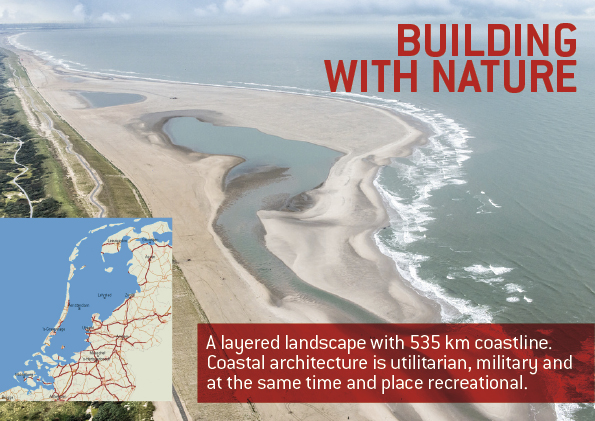
Delta Works
It is a resilient landscape, built to protect against the sea, built on fear of drowning and monsters. Hunter/gatherers migrated back and forth from the higher inland hills across the swamps to the dunes. Only poor people - like fisherman - lived precarious lifes in the dunes. Villages were swallowed by the sea mutiple times. Living in The Netherlands is a story about the liminality of coexistence between man and water. Safety is a big issue! In the latest Prinsjesdag budget 20 billion euro is designated for enforsing the dikes.
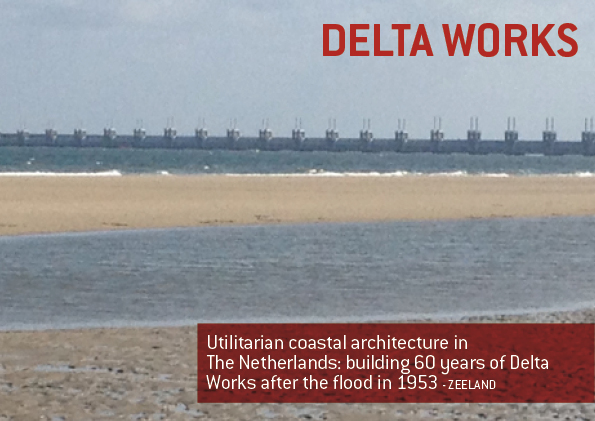
Bunkers
It is a hostile landscape, built to attack and defend, built to gain. Trade and war dominated the shores. Man is an explorer and invented cartography to chart the world and model reality and it’s myths. With the explorations of the sea for discovery of new countries and colonies, trading for goods, trafiking of people and cultures traders became rich and started hunting in the dunes, building boats and harbours. Wars left relicts and scars in the coastal landscape.
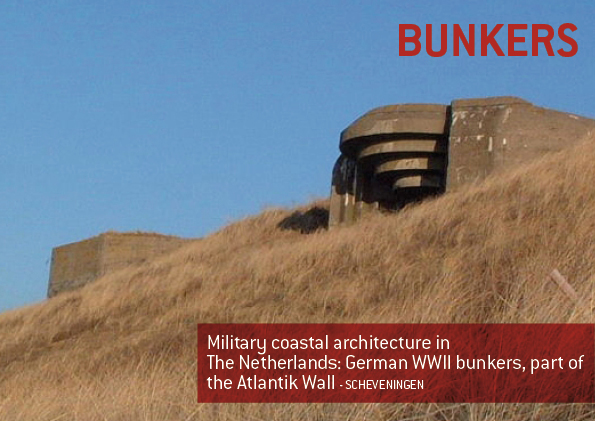
Tourism
Starting around 1800 the perception of the coast shifted to a landscape for wellness with tourists in seach of paradise. The coastal landscape became an imaginairy construction with the rise of Kurhauses, boulevards and casino's for the happy rich. Sea view became valuable. Mass tourism turned the shore into a commercial landscape in which beaches are more and more converted into private enterprises.
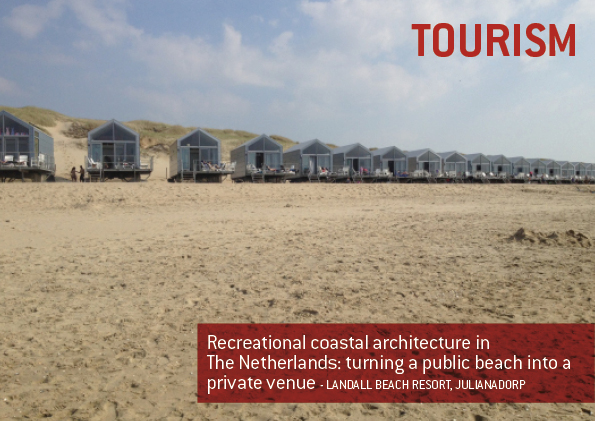
People in Scheveningen are born with sand between their teeth
However - it is a landscape to express your identity, that you are different! Even through invented traditions and staged authenticity!
Once a fishing village swallowed by the city The Hague there is still a vibrant Scheveningen identity. Even the construction of identity is appreciated. When in the fifties an economic impuls was needed for the declining fishing industry, the municipality of The Hague invented 'Vlaggetjesdag', a special day to celebrate the new herring. In search of branding they adopted the wapon of an extinct family at Hoorn or Enkhuizen: the 3 herrings! It became broadly adopted by the Schevening people as their logo and is recently even stamped into the garbage cans at the new boulevard of Scheveningen.
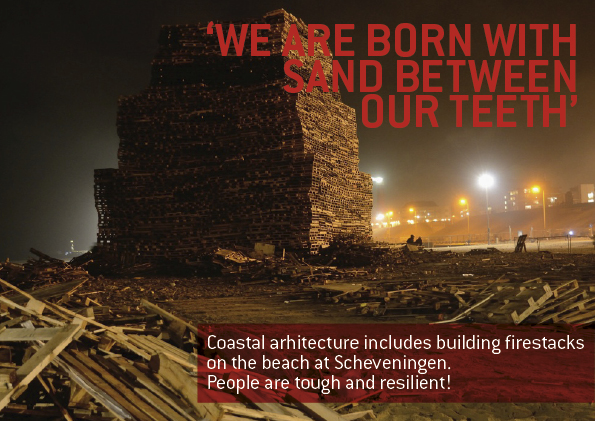
Badgast
In the most multi layered spot on the shores of the Netherlands Satellietgroep built Badgast. Scheveningen has all the stories to tell, including the myth of free horizon - and the illusion of the seaside as a place of mental and physical freedom, as a place to marry and mourn.
A cultural zenith! Badgast is built by recycle architects Refunc in the middle of urban beach community F.A.S.T. at the pivot point of boulevard and harbour. Built on top of a WOII bunker. Wedged between 2 fish and chips shops. Built on a derilict plot as an 'in between' adventure, instigated by reccession and (still) waiting for the highrise hotel to be built on the spot.
I love planning and politics! They shape - again and again - worlds beyond our imagination.
They seem to forget that Scheveningen is not shaped into 3 superimposed categories of Bath, Village or Harbour, but it is a layered coastal landscape, including residents and visitors.
Over and over residents combat superimposed changes, and alliances arise between fishermen and rich folks. It may be time to listen?
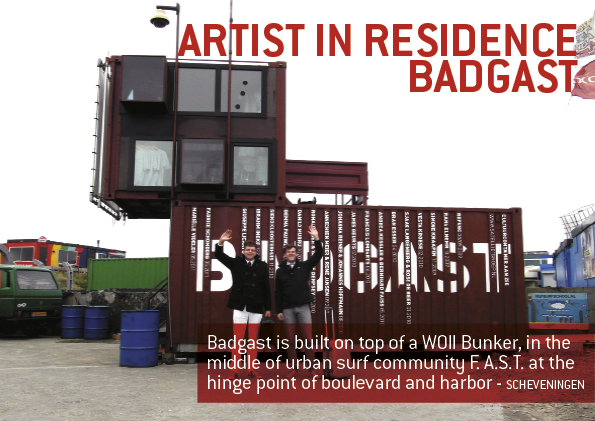
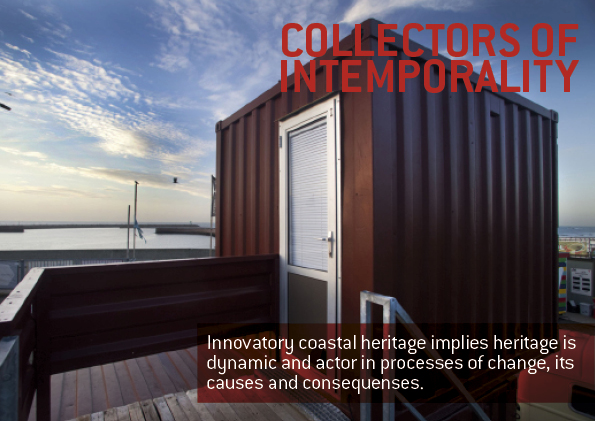
Resilience
I remember as a child that the Kurhaus was boarded up and destined to be demolished. Recently it just escaped bankrupcy again. The pier is closed for public as a result of the battle between the city municipality and Van der Valk family. The habour is turned into a Marina, where new residents in recreation houses complain about the noise and smell of the fishing boats. The Hague people do not go to Scheveningen and resist tourism spreading across the harbour. The Norfolkterrain itself was designated for culture, became a battle ground for competing ideas, but now, after the failure of the Spuiforum, now finally the terrain opens up for culture!
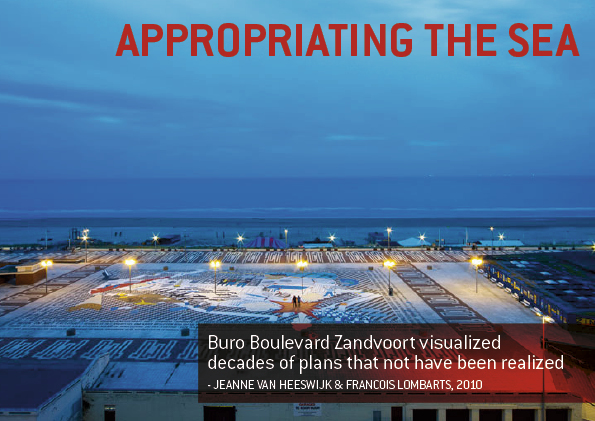
Appropriating the Sea
There is never one story to tell: the myths of coastal planning!
Buro Boulevard Zandvoort was a cooperative project by Jeanne van Heeswijk and Francois Lombarts. At the Burgemeester van Fenema square next to the boulevard of Zandvoort they set up a design studio. From this location they researched all the plans for the area that have been made over the years. Decades of plans that not have been realised. They also investigated the current needs and ideas of the inhabitants and visitors of Zandvoort.
The outcome of these researches where combined in order to create a big artist impression of all the drawings, plans, ideas and impressions that where made for this seaside area. With a team of street painters a huge drawing was painted on the square. It combined quotations from the many reports and municipal development plans with impressions from ideas for the area. All functions that the location could have had, but for various reasons still does not seem to have.
Thank you for your attention!
Now Wakes The Sea, 2012-now
| 2016-10-07 13:52:39
NL - Malta since 2012
| 0000-00-00 00:00:00
March 2012: preliminary artistic research ‘Artists as mediators of the unspoken’ on Malta for The Hague, candidate European cultural capital 2018
May 2016: bilateral Maltese & Dutch artistic/curatorial proposal BUOYANT – F’WICC L-ILMA (working title) is shortlisted for the opening exhibition of Valletta European cultural capital 2018!
2018: hosting artist-in-residency Austin Camilleri from Malta for exhibition Uptime_ icw Nest, The Hague. Artist talk with Suzanne Wallinga, curator.
Abstract, ingredients of BUOYANT – F’WICC L-ILMA presentation:



